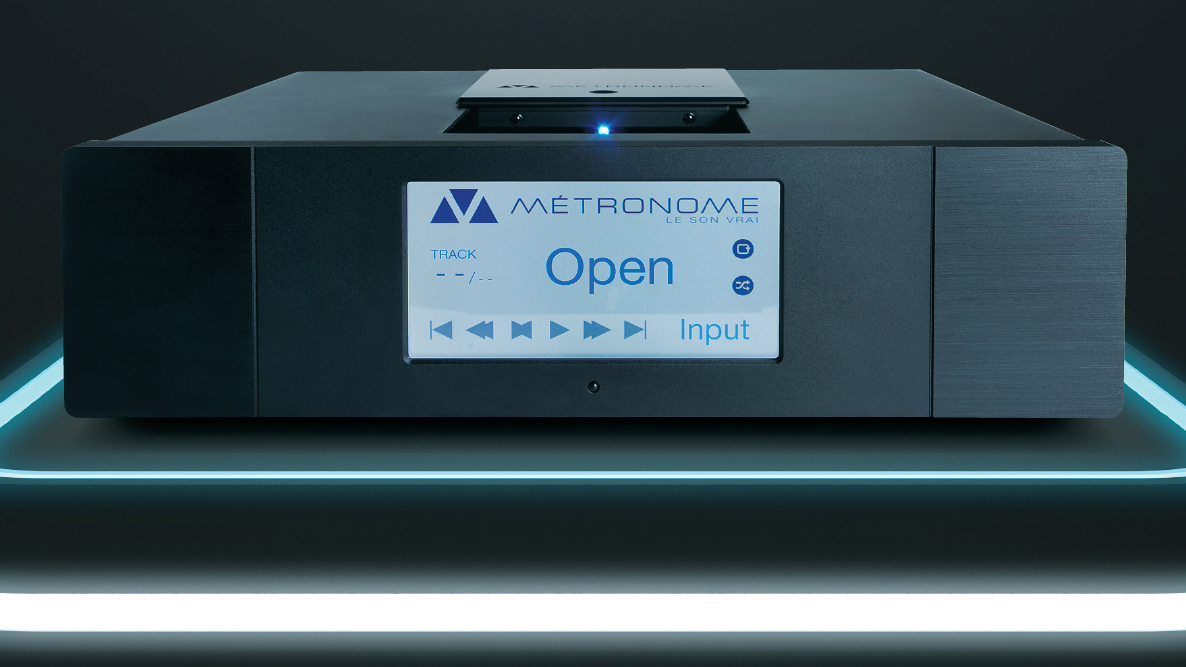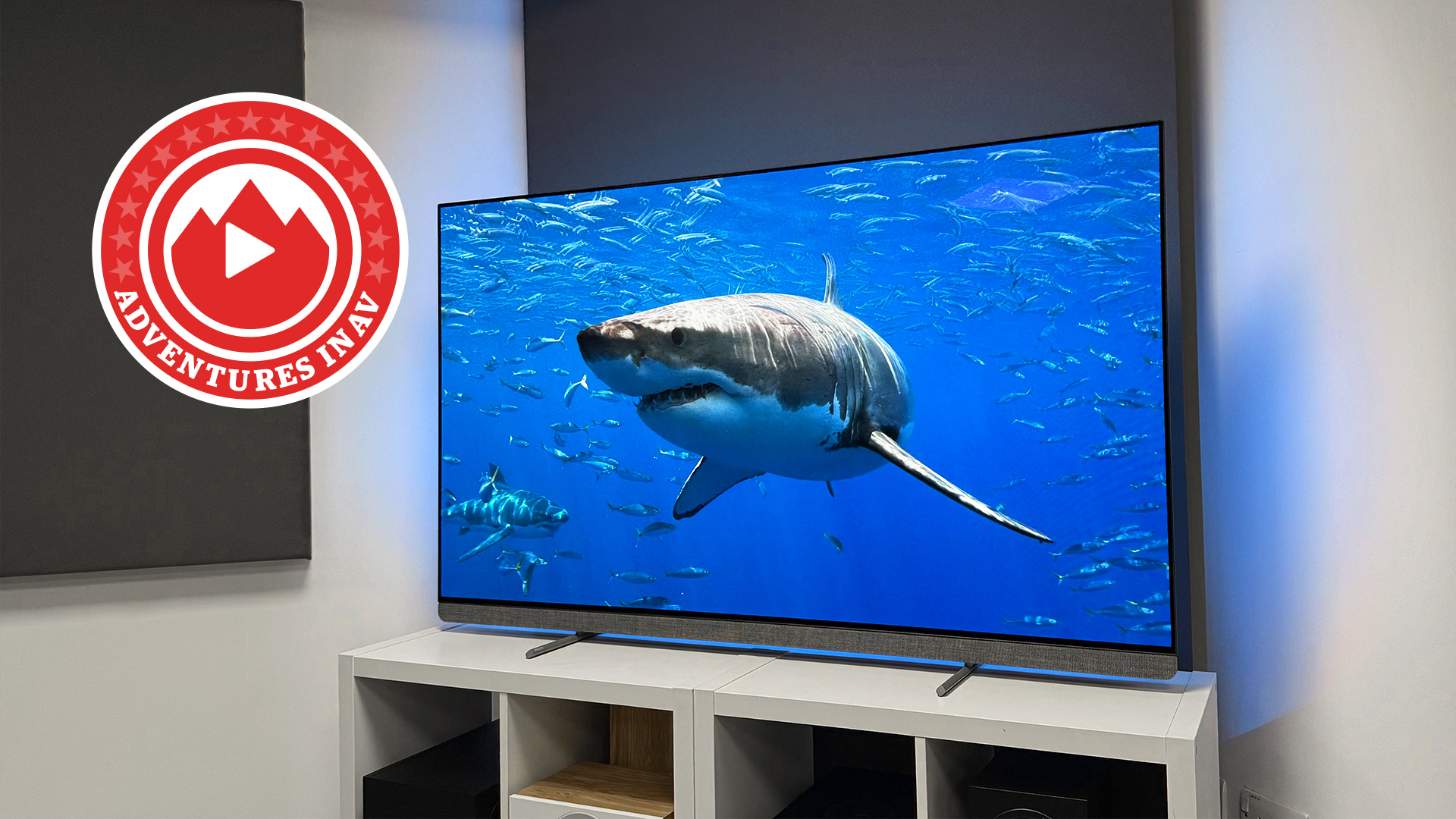What Hi-Fi? Verdict
The AQWO has a quirk or two, and its (optional extra) valve output mode didn't compare with its default solid state mode, but outside of these niggles, this CD player and DAC offers luxury-grade quality at a fraction of the price.
Pros
- +
Brilliant solid state mode
- +
Many filter options
- +
Solid build quality
Cons
- -
Valve mode isn’t worth it
- -
Lacks Ethernet input
- -
No headphone output
Why you can trust What Hi-Fi?
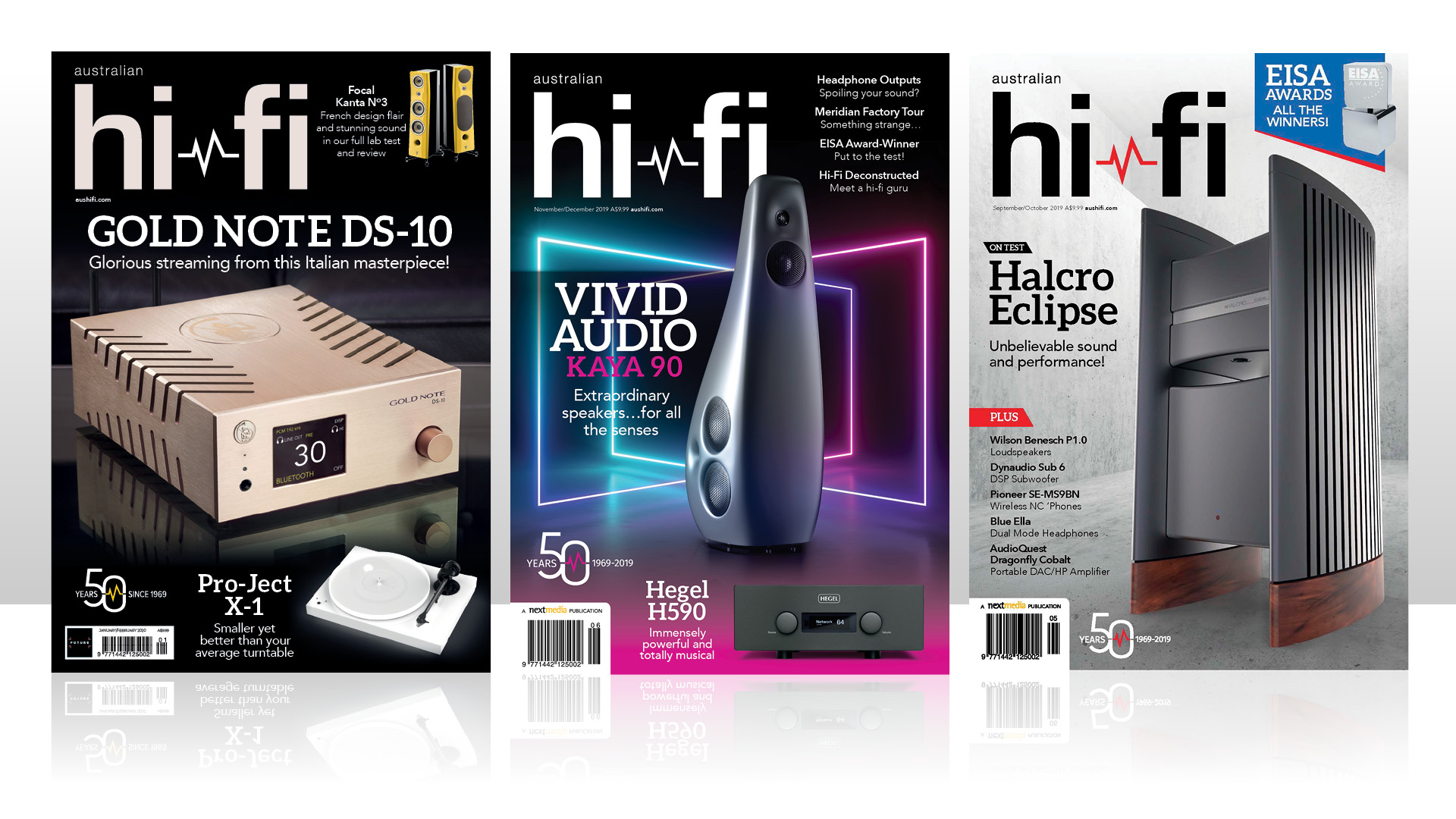
This review and test originally appeared in Australian Hi-Fi magazine, one of What Hi-Fi?’s sister titles from Down Under. Click here for more information about Australian Hi-Fi, including links to buy individual digital editions and details on how to subscribe.
Metronome’s AQWO SACD-CD Player/DAC is actually part of a trio, because the small French manufacturer decided it would be best to split the cost of the research and development it put into building its first-ever SACD player across an additional two models, which are essentially the ‘building blocks’ of the AQWO.
So, at the same time the company was developing the AQWO, it also built a transport (t|AQWO) and a DAC (c|AQWO). All three are built by Metronome itself in its factory near Montans in the South of France, where it also builds a luxury line under the ‘Kallista’ brand.
Equipment
The front panel of the AQWO (it’s not a model number, by the way, it means “I listen, I hear” in ancient Greek, according to Jean Marie Clauzel, who’s the General Manager at Metronome), is self-evidently dominated by a massive colour touch-screen display measuring 140 x 70mm.
The fact that the screen is so big means that, not only is there plenty of screen real-estate to show multiple icons and read-outs simultaneously, but also that the screen is easy to read, even from a considerable distance.
And of course it’s perfect if your eyesight is less than 20/20… and not having that degree of vision, we kind of dislike components that have displays so small we have to be within a metre to read them. The display is inset into the front panel which, we think it worth noting especially, is absolutely massive, being machined from a 20mm thick block of aluminium alloy.
The thickness of the front panel may well be the reason Metronome decided not to put the mains power switch on the front panel, and instead put it on the rear panel. This is something we’d normally chide a manufacturer about, because in most set-ups it means the switch is difficult to access, but in the case of the Metronome AQWO, we’re willing to forgive.
This is because the switch will always be easy to access due to its top-loading SACD player design, so you need to leave plenty of room above it to allow SACDs and CDs to be easily loaded and unloaded. As a result, it will always be easy to reach behind the AQWO and turn the mains power on and off… particularly since that switch is handily located at the top of the rear panel.
The latest hi-fi, home cinema and tech news, reviews, buying advice and deals, direct to your inbox.
Of course all the other controls you need to operate the AQWO are there on the front panel – it’s just that they’re on that large touch-screen, rather than on the fascia itself. The transport icons are arrayed along the base of the screen, from left to right they are: reverse track skip, fast reverse, stop, play/pause, fast-forward, and forward track-skip. All the icons are ‘industry standard’ except for the stop icon which is shaped like a bow-tie rather than the more usual square. Curious.
To the right of the transport controls is the section of the panel where you select inputs, because of course in addition to being an SACD and CD player (plus it will also play discs you’ve burned yourself on CD-R), the Metronome AQWO also functions as a DAC, so it will convert digital signals from another transport – your DVD player, your portable digital player, your computer… indeed from any device that has a digital output.
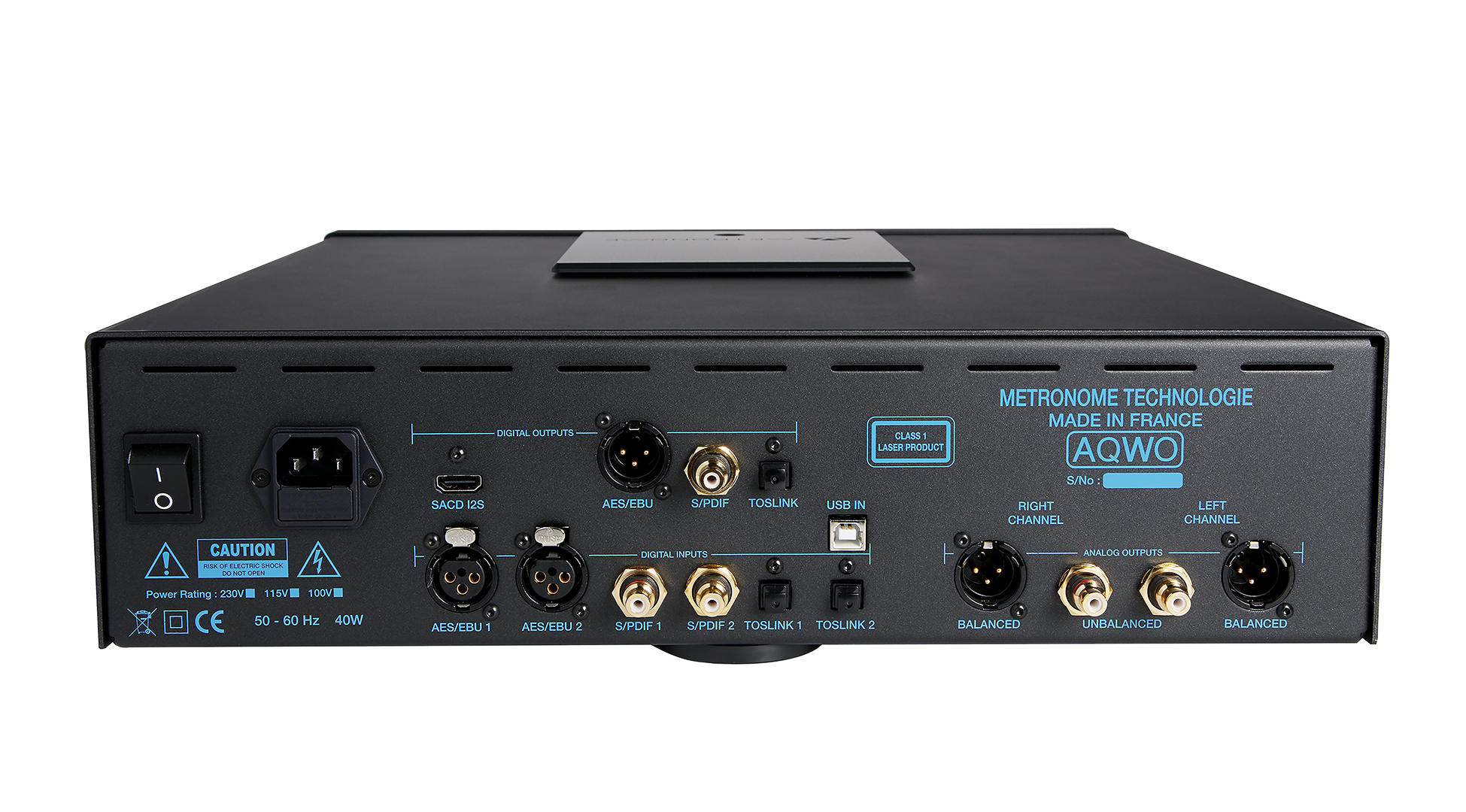
There are seven digital inputs – one USB (via a USB Type B connection), two AES/EBU (via XLR sockets), two coaxial SPDIF (via RCA sockets), and two optical (via Toslink sockets) but no Ethernet socket. The USB input will accept formats up to DSD512, while the other inputs accept up to 768kHz/32-bit PCM in addition to DSD (anything up to DSD512, or 8×DSD as it’s sometimes known).
The Metronome AQWO uses Asahi Kasei Microdevices Corporation’s Verita AK4497 DAC, the fourth-generation model in its so-called ‘Velvet’ series. At the time Metronome was developing the AQWO, the AK4497 was the flagship DAC in Asahi Kasei’s line-up… and it remained so until late 2019, when Asahi Kasei launched its Verita AK4499. Unfortunately, the new flagship DAC cannot be retrofitted to the AQWO, as it’s a 128-pin device, whereas the AK4497 is a 64-pinner.
As with many high-end DACs, the design of the AK4497 allows manufacturers to choose to use one of several different filters, or to permit their customers to choose between them. Quite a few manufacturers select just one filter and do not offer their customers any choice at all, despite these options being available on the DAC. Others offer maybe a choice of two (usually ‘fast’ and ‘slow’) only… and not the full set.
Metronome has generously allowed its customers to choose between six options: Sharp Roll-Off, Slow Roll-Off, Super-Slow Roll-Off, Short Delay Sharp Roll-Off, Short Delay Slow Roll-Off and Low Dispersion Short Delay.
Of course if you don’t like the sound of one filter, you can easily switch to another. In practise, our experience is that many owners of DACs which offer multiple filters use different filters depending on what type of music they’re listening to at the time – one filter type for classical music, another filter type for rock music, and maybe another for jazz, and so on.
Obviously, the type of filter you choose will affect the sound quality of the AQWO, but there’s another option you can choose that will affect sound quality even more. The AQWO comes standard with a solid-state output stage, however you can optionally choose one that has a second output stage, using valves, which then allows you to switch between the two output topologies. The valves are triodes, and they’re transformer-coupled. Adding this option also adds a couple of thousand to the recommended selling price.
The solid-state output of the Metronome AQWO uses four Texas Instruments OPA604 FET-input operational amplifiers in Class-A configuration. The OPA604 is an extremely high-quality op-amp with low distortion (0.0003%), very low noise (10nV/Hz) and a high slew rate (25V/µs) plus a gain bandwidth of 20MHz that’s notable not only for being able to natively drive 600Ω loads, but also for its outstandingly good sound quality.
The valve (tube) output uses a pair of JAN6922 triodes, which are military-spec editions of the 6DJ8/ECC88 valve type and are used in Class-A configuration in the AQWO. Originally designed (by Amperex) for use in radio tuners, the JAN 6922’s high gain saw it being used by Hewlett-Packard and Tektronix in their high-end test equipment and oscilloscopes in the latter half of the last century, while its excellent sound quality saw it being adopted by manufacturers of valve audio amplifiers.
Unlike some hi-fi components that offer the choice of solid-state or valve output, but have separate outputs for each, requiring the user to physically swap cables in order to switch from one to the other, the AQWO does all the switching internally.
Simply press the ‘soft’ button with an illustration of a valve on it that’s located immediately below the ‘Random’ function at the right-hand edge of the display. ‘Random’ of course, plays tracks on a CD or SACD at random, rather than in the usual play order.
Above this ‘Random’ function is a ‘Repeat’ function that can be set to either repeat a track indefinitely (some may say ad nauseum), or a complete album indefinitely (something we have been known to do, in fact – some albums are just that good!).
These random and repeat play functions, incidentally, are the only programming options available to you – you can’t program tracks for playback in sequence, or cause particular tracks not to be played.
The remote control is black, slim-line and beautifully curvy but is most remarkable for its length: 250mm! If you have a Metronome amplifier, the AQWO’s remote will also operate it, but you will need to select either the ‘CD’ or the ‘AMP’ button on the remote as appropriate in order for it to operate the correct component. It also means that three of the buttons on the remote – ‘Vol+’, ‘Vol–’ and ‘Mute’ – are redundant if you own only an AQWO.
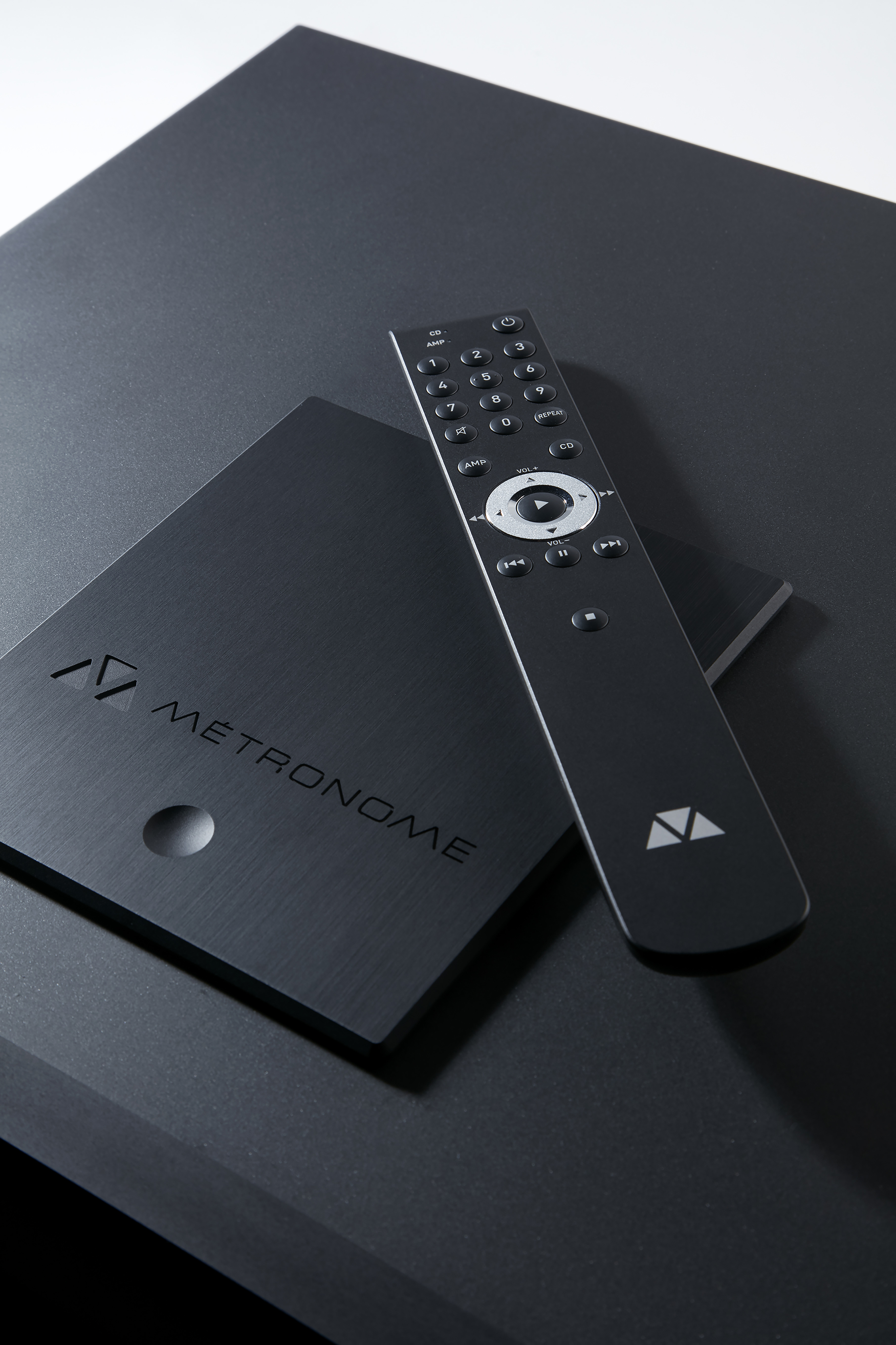
Installing the AQWO is made dramatically easier because Metronome actually includes a data disc with Windows drivers for the USB and PCM/DSD inputs. At the risk of looking a gift horse in the mouth, it probably would have been better, more convenient, (and less costly) to put these on a USB stick, but we’re not grumbling. And of course if you’re only using the AQWO as a CD/SACD player you won’t need to install drivers at all (neither will you have to if you own a Mac, which does not require drivers at all).
The handsome Owners’ Manual that’s supplied with the AQWO is beautifully presented (and comes with a ‘Certificate of Authenticity’ personally signed by none other than Christian Bat, the CEO of Metronome), but it’s rather light on detail.
That is, excepting when it comes to the USB driver installation process and instructions for how to set up the AQWO with Foobar 2000 for DSD playback, where it goes into extreme detail, with step-by-step instructions, all the URLs you will need, plus helpful screenshots.
It seemed to us from this that AQWO was recommending Foobar 2000, which is handy, because (a) it’s a good program and (b) it’s free. But when we actually fired up the disc in a computer to access the drivers we discovered that the disc not only has Foobar 2000 on it, along with installation instructions, but also the Jriver MediaCentre program, again with installation instructions, so it would appear that Metronome is happy for you to use either program.
In use and listening
We have often been a little put off by the colours some manufacturers use on their displays. One model that we can recall used a rather lurid shade of pink for its display. So initially we were rather excited to hear that Metronome had been forward-thinking enough to allow us to change the colour of the AQWO’s display to suit our personal preferences.
However when we started using the machine we discovered this not to be strictly true. It is only the colour of the print on the display that can be changed. The background colour always remains white, and the transport icons always remain grey.
The print on the display can be assigned one of eighteen different colours, including a pure black. We ended up using black because although it’s not exactly the sexiest of the eighteen colours on offer, it was by far and away the easiest to read. The yellow colour, for example, is very difficult to read.
After you have chosen your preferred type colour, you can then adjust the screen brightness through seven different levels – which includes ‘off’.
Although it’s nice to have this brightness switching, the circuit fitted to the AQWO has an annoying operational quirk which means that if you dim the display accidentally, you then have to cycle through all the different dimming levels before you can get back to the brightness level you wanted in the first place. This is a petty grievance, but one that could be easily addressed by offering a brightness up/down option.
In normal use, the screen shows elapsed time (track) in very large numerals in the centre of the display, while to the left of this is shown the number of the track being played and the total number of tracks on the disc. This is the only information that’s available – you can’t show remaining time in a disc or track, for example, and there is no CD-Text function.
Pressing and holding the large (rather too large, in our opinion) Metronome logo at the top left of the screen causes a second screen to appear, on which you can choose nominal output voltage level (1.4V, 2.5V or 3.5V), your preferred Digital Filter, and your preferred display print colour.
At the top right of this second screen is a tag labelled Input ON/OFF. Pressing this brings up a third screen that allows you to activate (or deactivate) the AQWO’s digital inputs. This means that if you have only one device connected you can deactivate the other five inputs so that you don’t have to cycle through them on the main screen input selector. (You cannot disable the USB input though – this always remains ‘active’ and so will always show as a selectable option on the main screen.)
If the Metronome’s top-loading system is a bit clunky, that will be down to the user, because nothing at all is automated – it all has to be done by you… by hand. If the lid doesn’t slide back smoothly, you’re not pushing it smoothly enough. If it doesn’t close smoothly, well you’re not pulling it steadily enough.
And if the player starts making very strange moaning sounds when you do close the lid, well that’s because you forgot to put the magnetic polyoxymethylene puck/clamp on top of the disc! We guess moaning sounds are better than having the disc fly off the spindle, but it would have been nice if Metronome had included an optical sensor inside the AQWO so it would not even attempt to spin up a disc if the puck/clamp was not present.
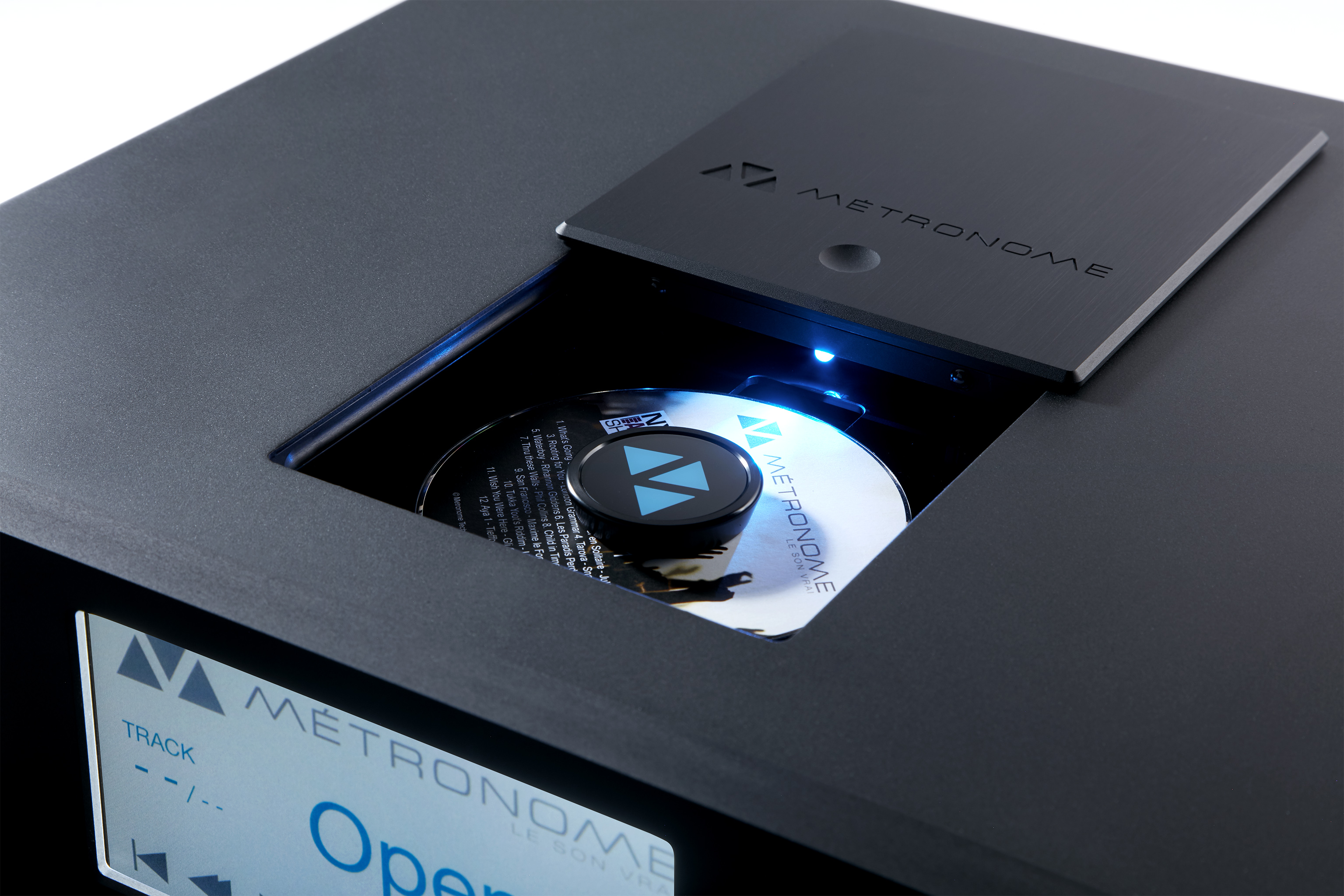
Metronome does not make its own top-loading CD mechanisms of course. Although Metronome has used the most famous top-loading mechanism in the past – the Philips CDM12PRO (and still uses this drive in the Kallista DreamOne, thanks to its foresightedness in purchasing a large number of them, together with a shed-load of spare parts, before Philips shut down production), the top-loading mech used in the AQWO is made by D&M Holdings in Japan.
This mechanism is, nonetheless is closely modelled on the DCM12PRO and, like it, uses a twin laser single pickup that houses both a 650nm wavelength laser (for SACD) and a 780nm wavelength laser (for CD) in a single optical system. This technique ensures superior alignment and reduced radiation.
As with all SACD players, it takes a little longer to load a CD than it does an SACD (around 11 seconds for a CD vs. around nine seconds for an SACD) and, once loaded, it takes a further eight seconds to actually start playing music after you’ve pressed the ‘Play’ button. Track skip operations are also fairly slow: if you try to skip from one track to another it will take around five seconds after you’ve pressed the skip button before music starts playing.
It’s all worth the inconvenience and waiting though, because the sound of the Metronome AQWO is, well… pretty much whatever you want it to be, because with six different filters for the digital domain plus the choice of using either solid-state or valve amplification for the analogue domain, the AQWO has twelve completely different and unique ‘sounds’ available to suit your personal preferences, your musical tastes and the other components in your audio system.
We started our listening sessions with a very clean-sounding CD of Davitt Morony playing Bach’s Art of Fugue on harpsichord. It didn’t take very long to decide we preferred the sound we were hearing from the solid-state stage over that we were hearing from the valve stage.
Listening to the harpsichord via solid-state, the sound of the strings was crisp and truly had the twangy ‘plucked’ sound and we could clearly hear the individual layers of the other strings as they contributed their pitches and resonances. When we switched to valve, we lost a little of the crispness – though the ‘twang’ was still a ‘twang’ – but perhaps the biggest difference was that the layering thickened perceptibly, so we felt we were foregoing some of the intricacies of the ways the sounds mixed with each other.
Initially we thought this may have been due to the filter we’d started out using (the ‘Sharp Roll-Off’ filter) so we methodically went through each filter in turn only to discover that whilst we did find a filter we liked better (the Slow Roll-off filter), we always preferred the sound quality of the AQWO when it was set to ‘solid-state’… at least we did when listening to this particular disc.
Things were not so clear-cut when we started playing Eleanor McEvoy’s album Love Must Be Tough on SACD. Her voice, of course, is unmistakable, even allowing for her accent, and this time we quite liked the added sonic thickness from the valves, which gave her voice added personality, and the instruments a ‘pub-like’ sound quality that we found most appealing and wasn’t present when we listened via the solid-state output.
The almost round-like way the different instruments take turns on Mother’s Little Helper, for example, minimised the sonic complexity and even with valves we could appreciate the sound of the piano, drums, sax… et al. The same was true for the almost a capella song If You Want Me To Stay, with its deep-pitched drum almost heart-beating in the background.
We then used piano to evaluate the Metronome’s sound, via Chopin Showcase on Move, on which we find Ian Holtham playing Chopin’s 24 Preludes (Op. 28), which is one of our favourites partly because it cycles through the circle of fifths, which we find both intellectually and aurally satisfying. (If you’re into trivia, you should remember that it’s the only work in which Chopin used every key signature, which is a question that’s sure to pop up some time). Holtham’s playing is beautiful and the sound from the Steinway D is absolutely extraordinary.
Through the Metronome, and via the solid-state output, the Steinway’s higher notes sounded gloriously pure, and down in the mids and bass, the richness and sustain was exemplary. Switching to valves actually increased the richness of the sound but at the same time we fancied there was a diminution in the bass, as if Holtham had eased off a little with his left hand.
Playing Conditions (The Temper Trap), the Metronome AQWO reproduced the sound exactly as we remembered hearing them live, with the band’s etched and crafted sounds delivered to perfection. The sound of the snare on Resurrection, as well as that of the drums and other percussion, was rendered exactly.
Then there’s the sound of Dougi Mandagi’s soaring vocals – what a voice, and so wonderfully revealed by the Metronome. Again, switching to valve output thickened the sound, but somewhat differently this time, because we thought we could have been listening to a valve amplifier.
Playing music via the Metronome AQWO’s various digital inputs, including comparing rips of the same music we’d played in CD format we found we could tell no difference between CD and the rip of the CD played back via the digital input, so all our same comments about playback from disc also apply to playback via the digital inputs.
Playing back higher-res recordings via the USB input certainly improved the ultimate fidelity, per se, but our impressions of the sound of the AQWO remained the same.
And despite the seeming attraction of being able to get ‘valve sound’ at the flick of a switch, we don’t believe it’s a ‘true’ valve sound because a part of the valve ‘sonic’ is the way the valves and transformer interact with the loudspeakers, and that doesn’t happen here.
Yes, you do get a different sound, but it’s not the same that you get from a valve amplifier. We much preferred the sound of the AQWO in its solid-state output mode and being able to use the different filters to adjust for the sound quality we wanted.
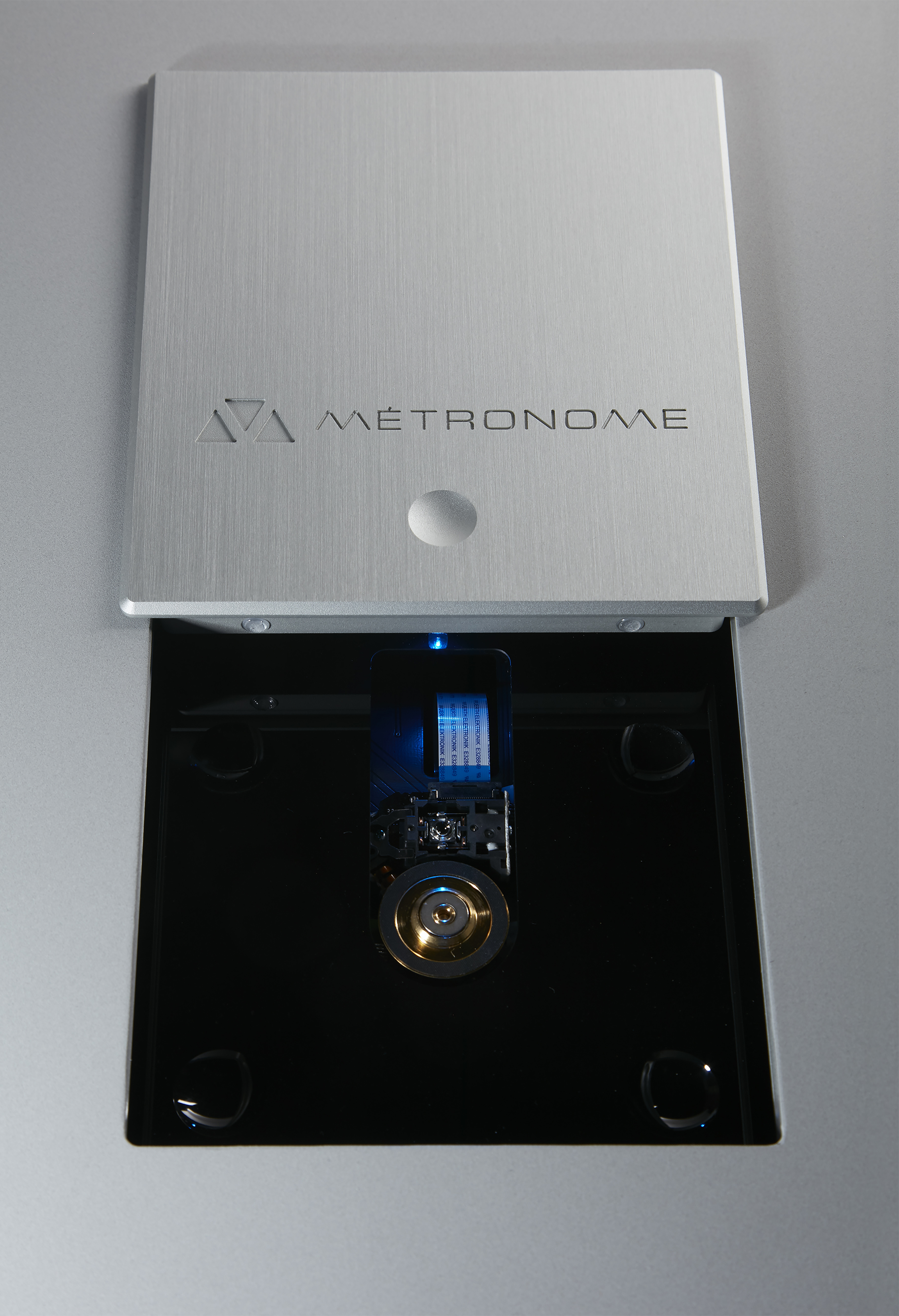
Final verdict
Whereas most people can only dream of owning a Kallista DreamPlay One, the Metronome AQWO is a much more reachable target. For sure, the DreamPlay is a much, much, better-looking machine, but the two players are of equally high quality, are made by exactly the same company, and whereas the Dreamplay One only plays CDs, the AQWO plays SACDs as well and adds extra value by virtue of being an outrageously good DAC into the bargain.
So what about the sound? We have not heard the two players side by side, but we have heard both individually and quite frankly, don’t think it would be possible to tell the sound of the one from the other in an A/B comparison with the AQWO at its optimal filter setting… at least not when the AQWO is in its solid-state output mode!
Which means that here, for the first time, you have a chance to have Kallista DreamPlay One sound quality at a Metronome AQWO price. Gotta love that!
Lab test results
It’s unusual for the output voltage of a disc player to be switchable between three different voltages, and we are not 100% sure why Metronome has done it, but done it it has. The output voltage shown in the tabulated test results is for the 2.5V output, measured at the unbalanced outputs and you can see that the 2.4+ volts measured by Newport Test Labs is pretty close.
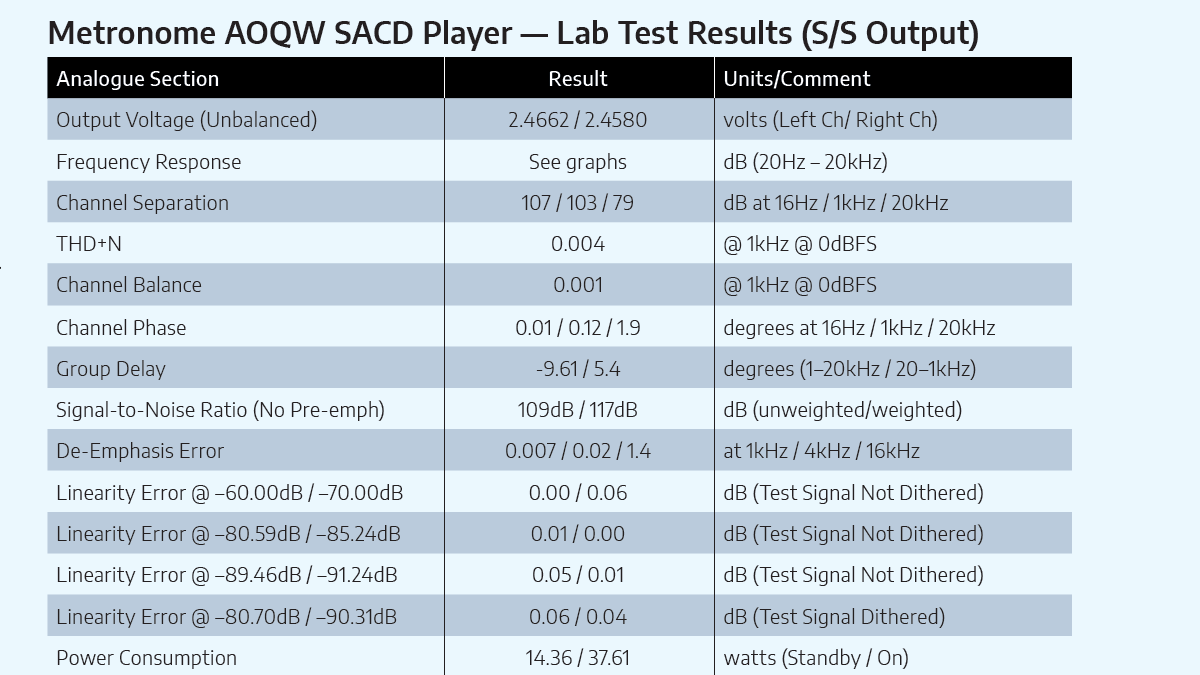
For the same signal, the voltage at the balanced output was 4.9V, which at least shows the AQWO has a true balanced output, rather than one of the ‘pseudo’ types that are appearing on some audio products.
What the tabulated Test Result chart does not show are the voltages for the other selectable outputs. When the AQWO is set to 2.5V, the balanced output will deliver 5.33 volts via the solid-state stage, and 4.91 volts via the valve stage.
When the Metronome is set to 3V, the balanced output will deliver 6.33 volts via the solid-state stage and 5.84 volts via the valve stage. (For unbalanced figures, simply divide these voltages by two).
The tabulated Test Result chart also shows channel separation only for the solid-state stage, where the results at 16Hz (107dB) and 1kHz (103dB) were excellent, and the result at 20Hz (79dB) good but not great.
Measured with the valve output, the results deteriorated quite a bit, with separation at 72dB, 84dB and 58dB for the same three test frequencies.
Channel balance also varied with both frequency and output stage, with the best result coming from the solid-state stages. At 1kHz, channel balance was 0.001dB, which is outstandingly good. At the same frequency, with the valves, channel balance was 0.036dB, which is self-evidently not in the same class, but still excellent.
The same was not true of interchannel phase, because while the Metronome AQWO returned good results at low and mid-frequencies (0.01° at 16Hz and 0.12° at 1kHz) and a fair result at 20kHz (1.4°), the same was not true when the valves were interposed, with results at the same three test frequencies of 0.76°, 0.25° and 8.62°.
Interestingly, the valve output also inverts absolute phase, so if you think you can hear absolute phase, you’d have to switch your speaker wires around every time you switched from the solid-state output to the valve output. We’re in the camp that says that even if you can hear a difference, it’s not worth getting bothered about, because you can never be sure the absolute phase of the recording is correct in any case.
Distortion was, as you’d expect, completely different depending on whether the solid-state or valve output stage was employed. Newport Test Labs measured both, with the (a) designator in each graph caption being the solid-state result, and the (b) designator the valve result.
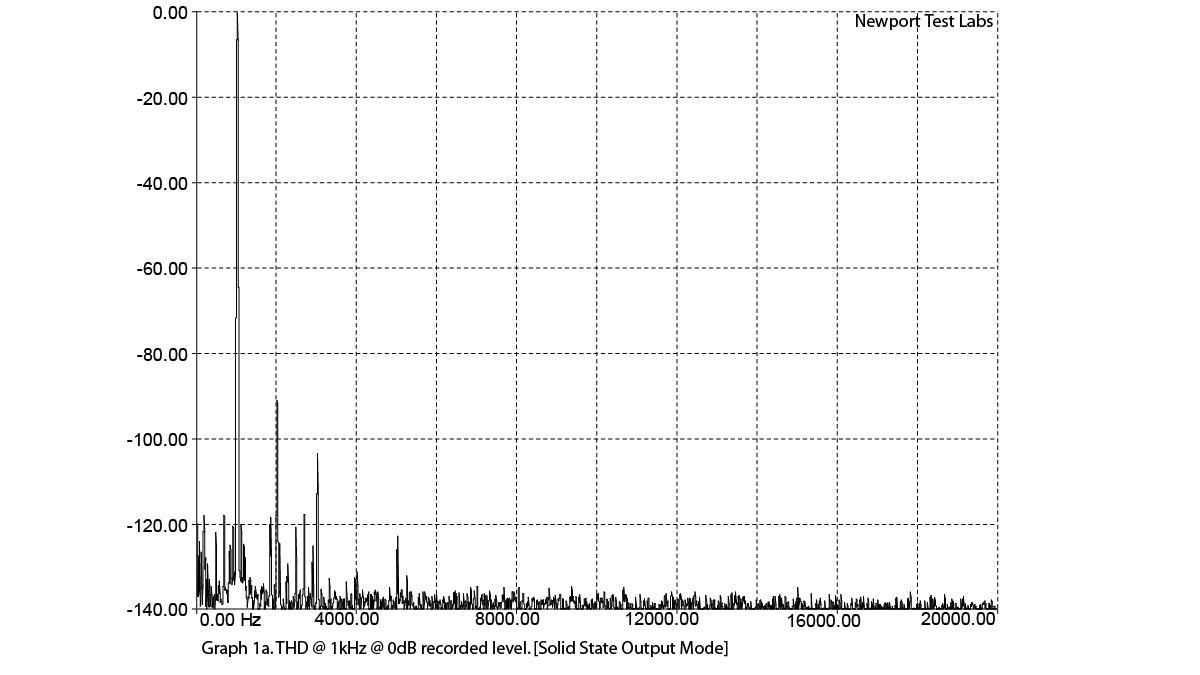
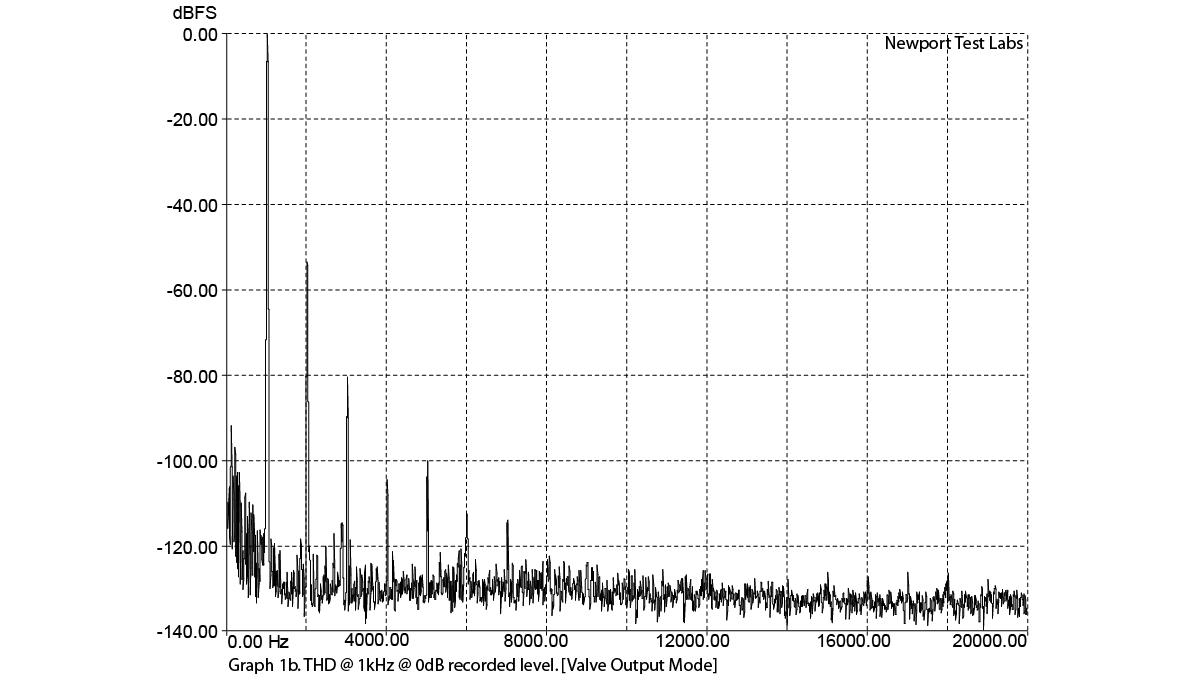
Looking at Graph 1a (0dB recorded level/maximum output) we can see a second harmonic at -90dB (0.0031%), a third at -103dB (0.0007%), a fourth at -130dB (0.00003%) and a fifth at -123dB (0.00007%). For the same test signal, the figures for the valve output were 53dB (0.2238%), 80dB (0.01%), 105dB (0.00056%), 100dB (0.001%) plus a few higher-order harmonics.
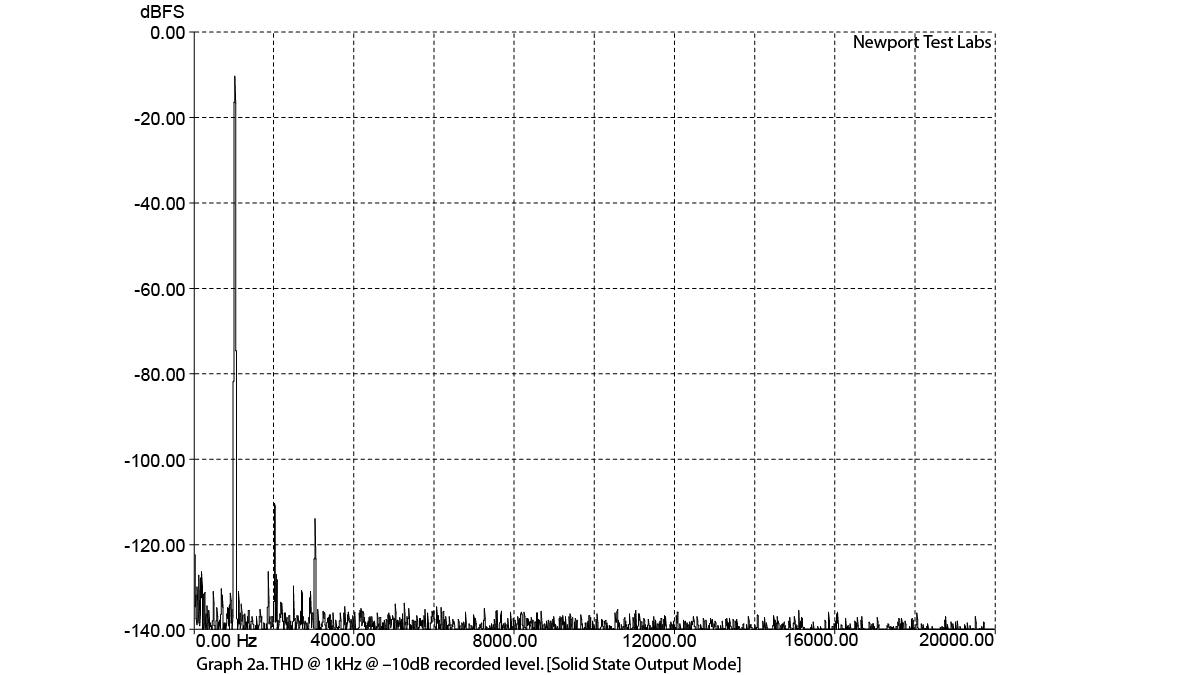

Graph 2a would suggest that the distortion shown in Graph 1 was primarily a function of the output stage, rather than the DAC, since the lower test level has resulting in the second harmonic dropping to -110dB (0.00031%) and the third to 113dB (0.00022%), while the higher-order components have vanished entirely. Which in turn means that all the harmonic distortion components visible on Graph 2b are primarily caused by the valve stage, not the DAC.
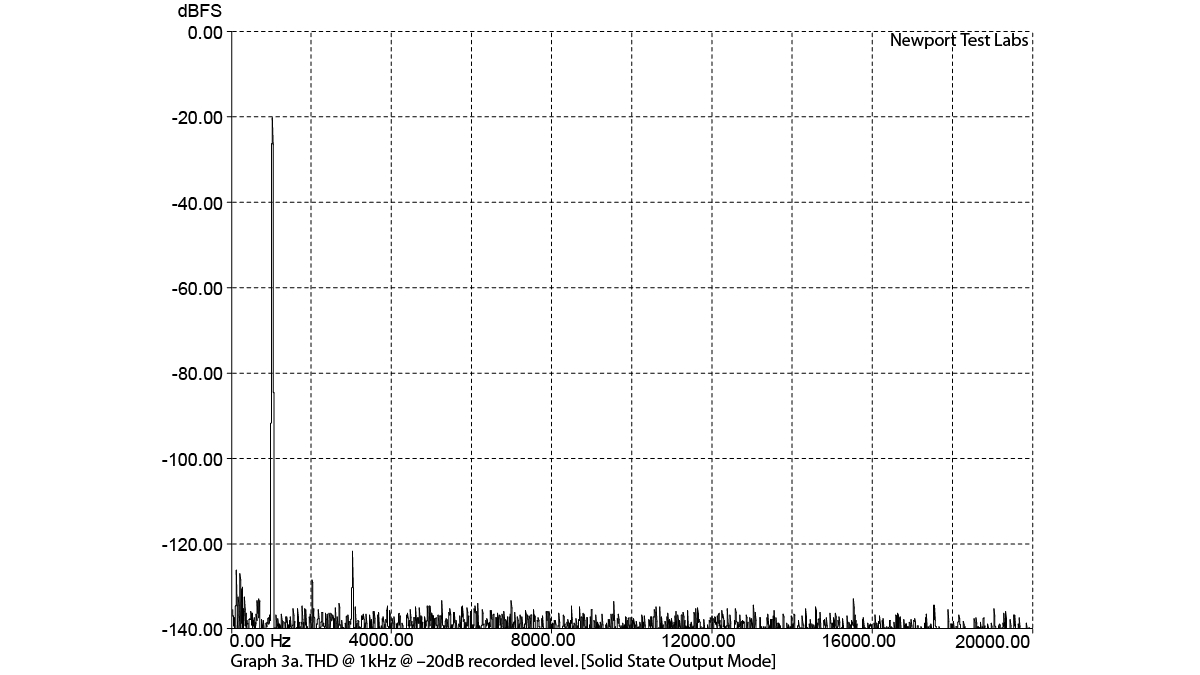
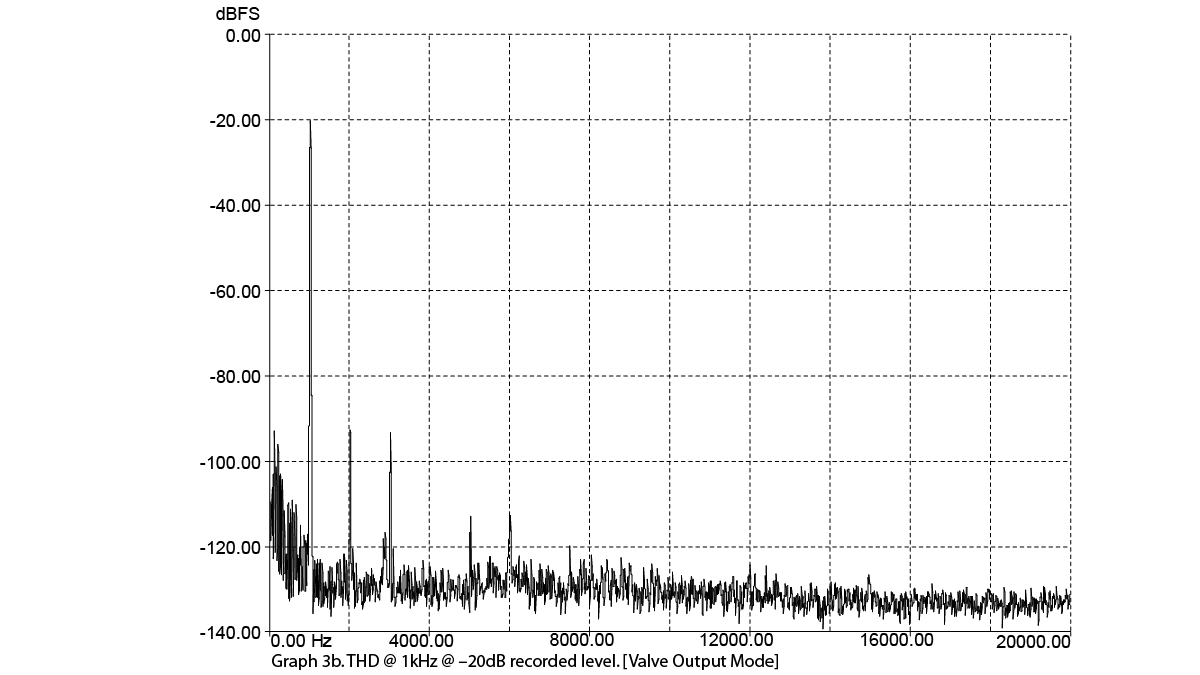
At a recorded level of -20dB, using the solid-state output, second harmonic distortion was at -129dB (0.00003%) and third was -122dB (0.00007%) with no other components visible above the noise floor (Graph 3a). At this level, the performance of the valve stage is considerably improved, as you can see for yourself (Graph 3b).
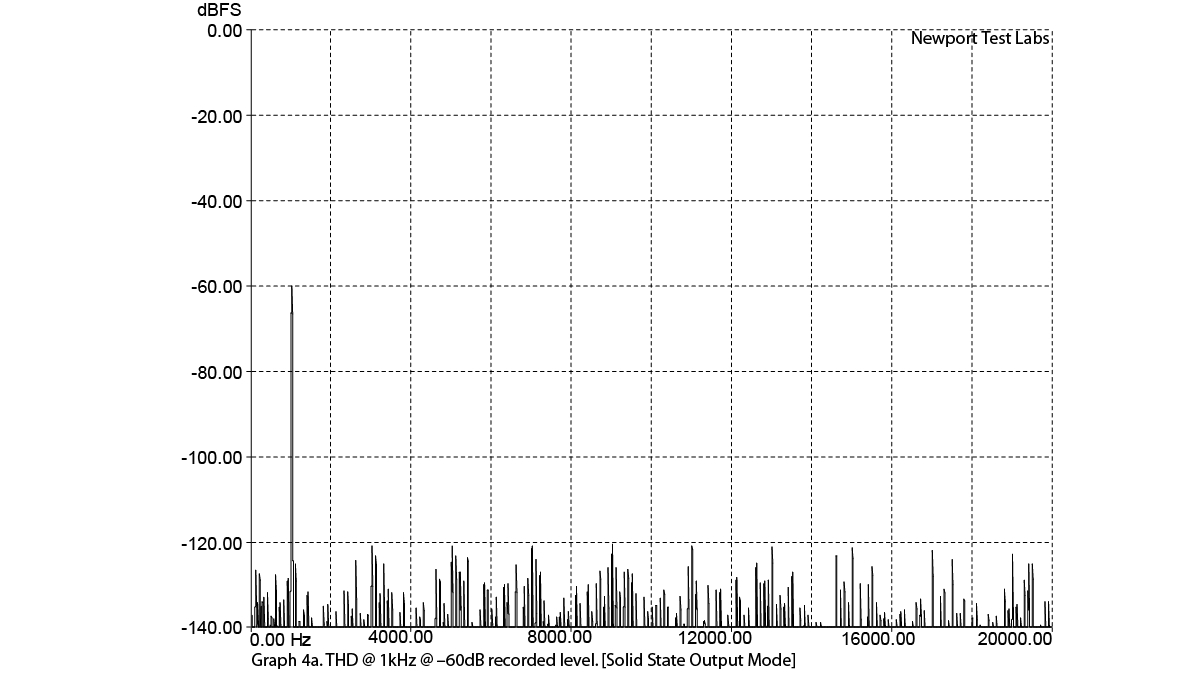
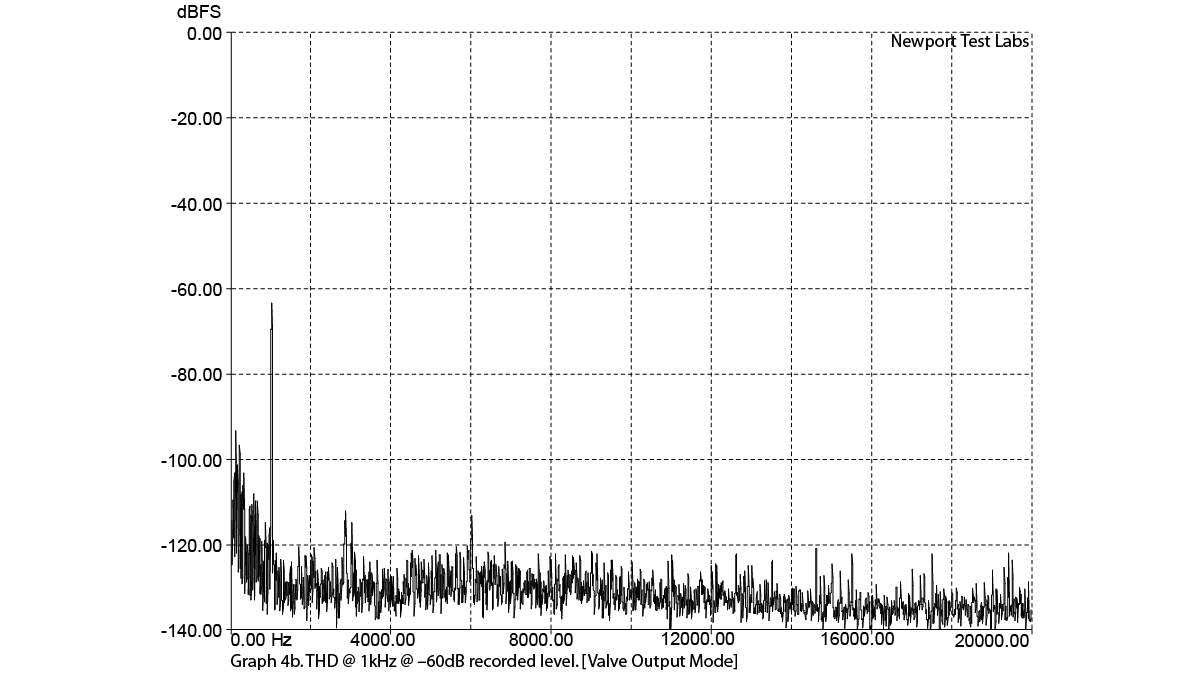
Graphs 4a and 4b are interesting, because the ‘grass’ at the bottom of Graph 4a is caused by converter errors that are simply the result of the test signal not being dithered. Since all recorded music is dithered to prevent this happening, it’s kind of a ‘false’ test result.
The fact that the ‘grass’ isn’t present on Graph 4b is because the noise of the valves is ‘hiding’ it, so it’s probably a good time to talk about the Metronome AQWO’s signal-to-noise ratios, as measured by Newport Test Labs.
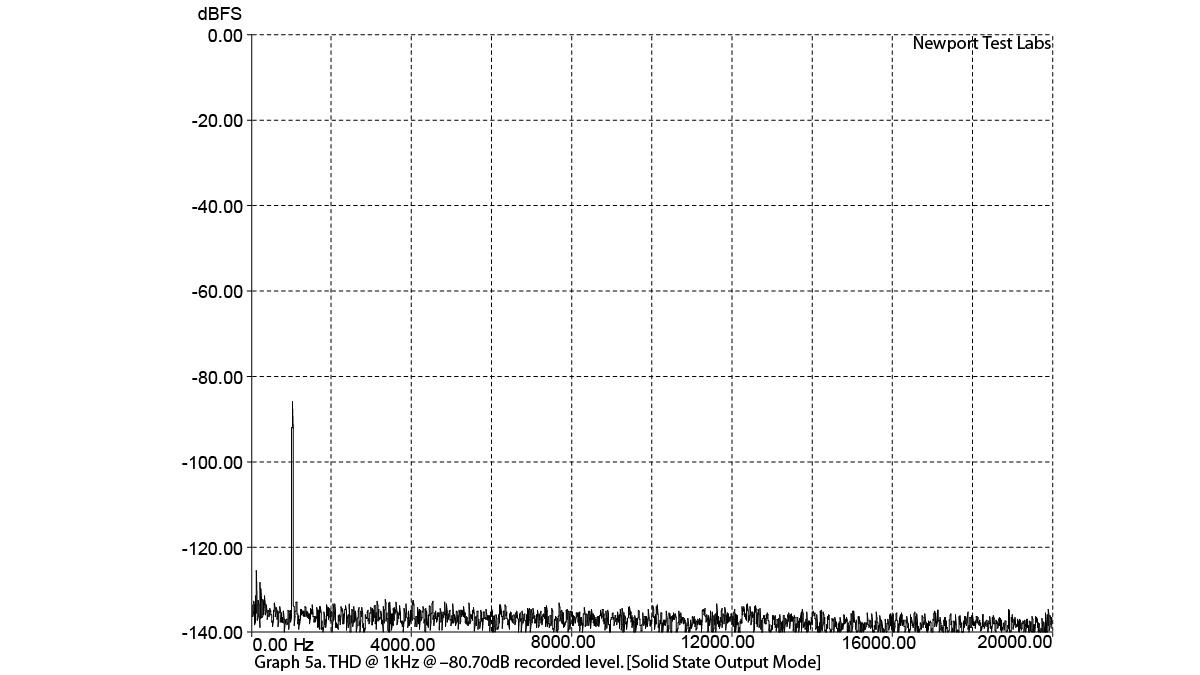
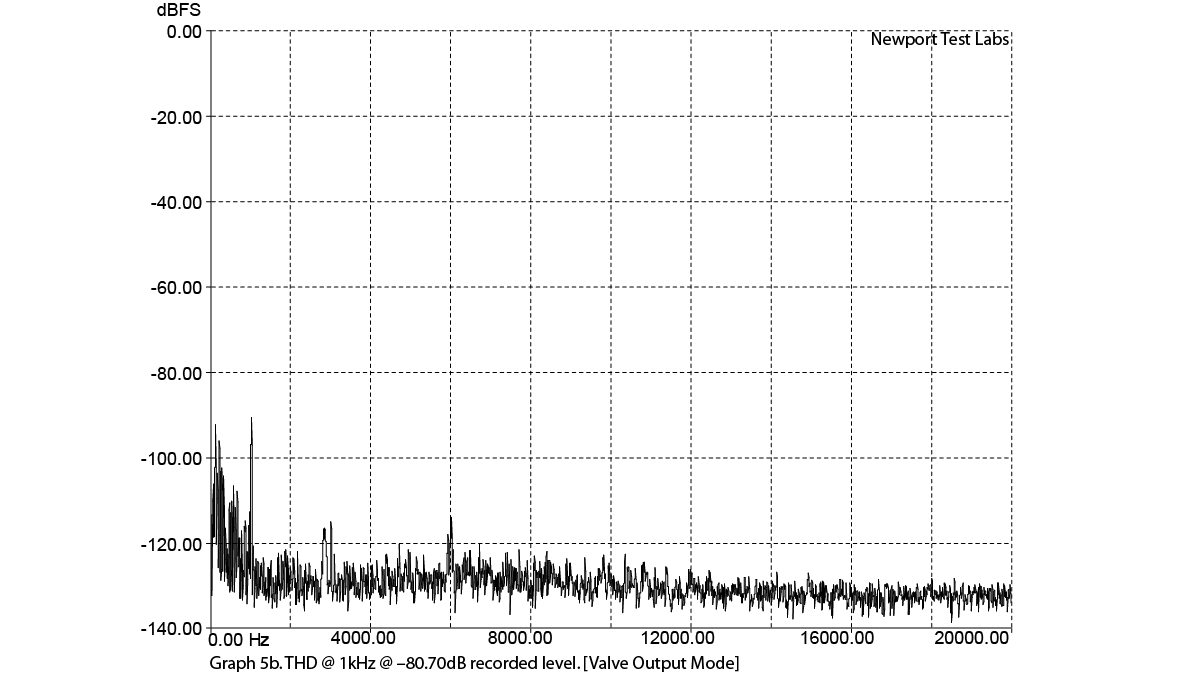
The labs’ solid-state results were excellent: 109dB unweighted, improving to 117dB with A-weighting. Via valves, these ratios reduced to 78dB (unweighted) and 88dB (A-weighted). The effect of dither is clearly shown in Graph 5a, where the -80.70dB test signal is dithered, resulting in absolutely no distortion from either the DAC or the solid-state output stage.
In Graph 5b, since we know that the DAC is not contributing any distortion or noise, what’s visible is due to the valves.
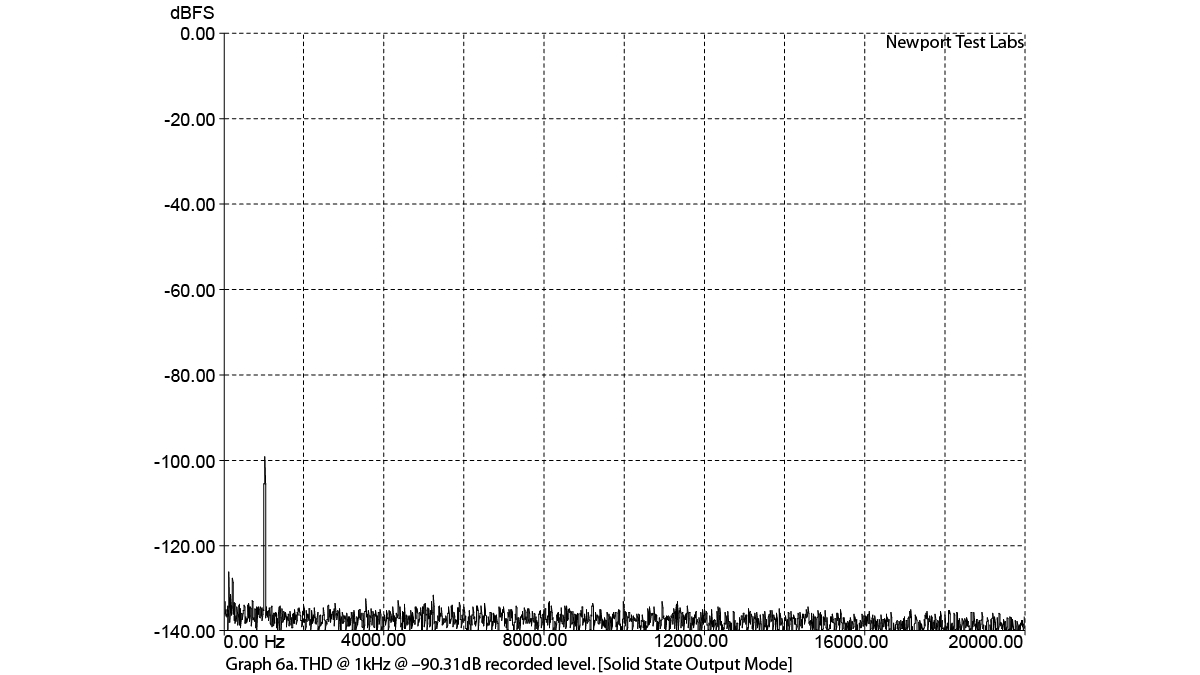
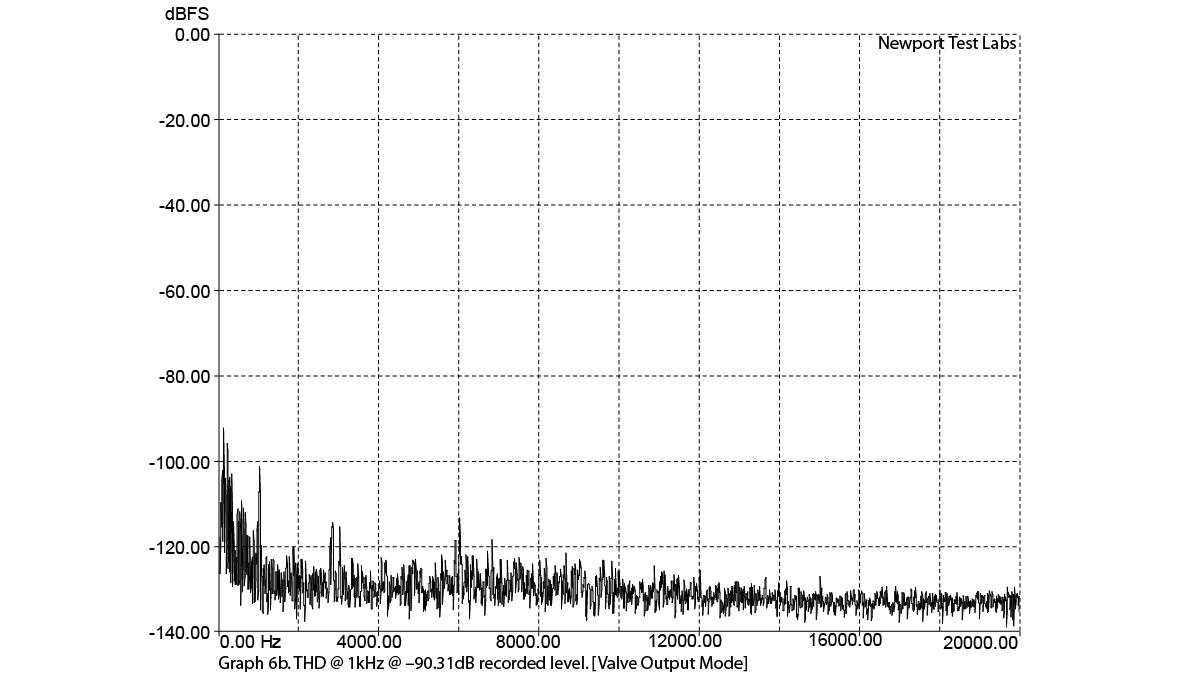
Graphs 6a and 6b show the results for a -90.31dB dithered test signal.
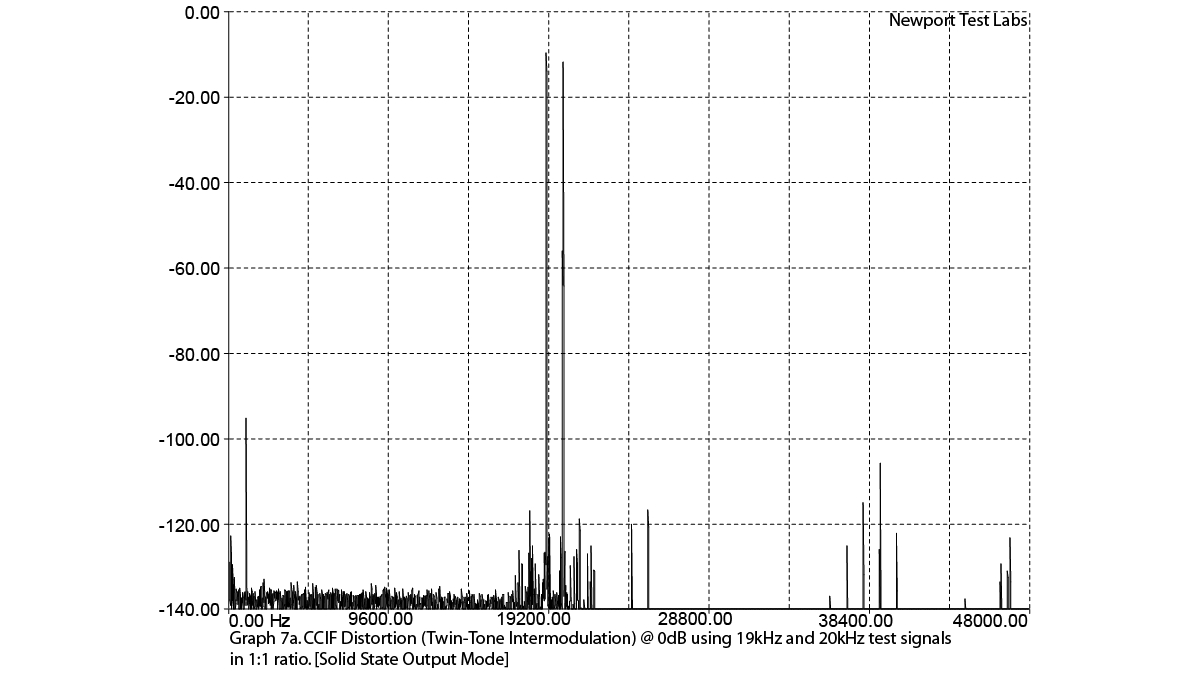
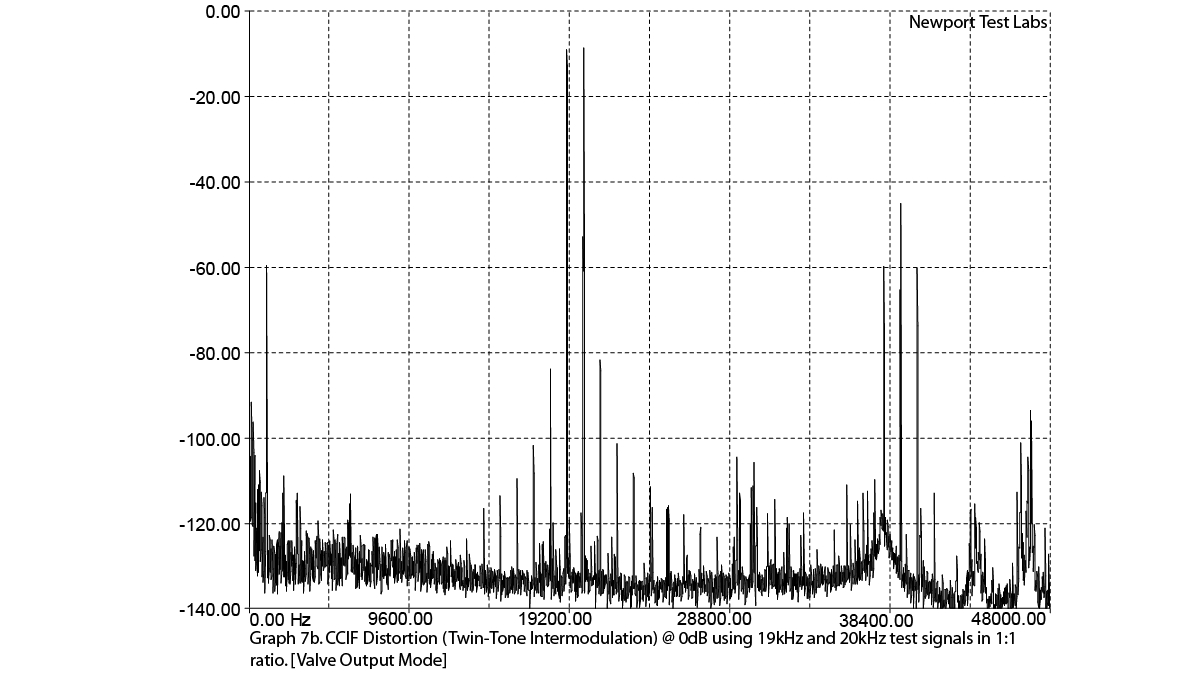
We have to say that we were surprised by the differences between the solid-state and valve output stages when Newport Test Labs tested the Metronome AQWO with a CCIF IMD signal. The result for the solid-state output (Graph 7a) was relatively clean, with a regenerated difference signal at -95dB (0.00177%), some sidebands down around -120dB (0.0001%) and some high-frequency sampling artefacts.
As you can see from Graph 7b the same was not true for the valve output, with a regenerated difference signal at -60dB (0.1%), sidebands at -80dB (0.01%) and far more high-frequency sampling artefacts.
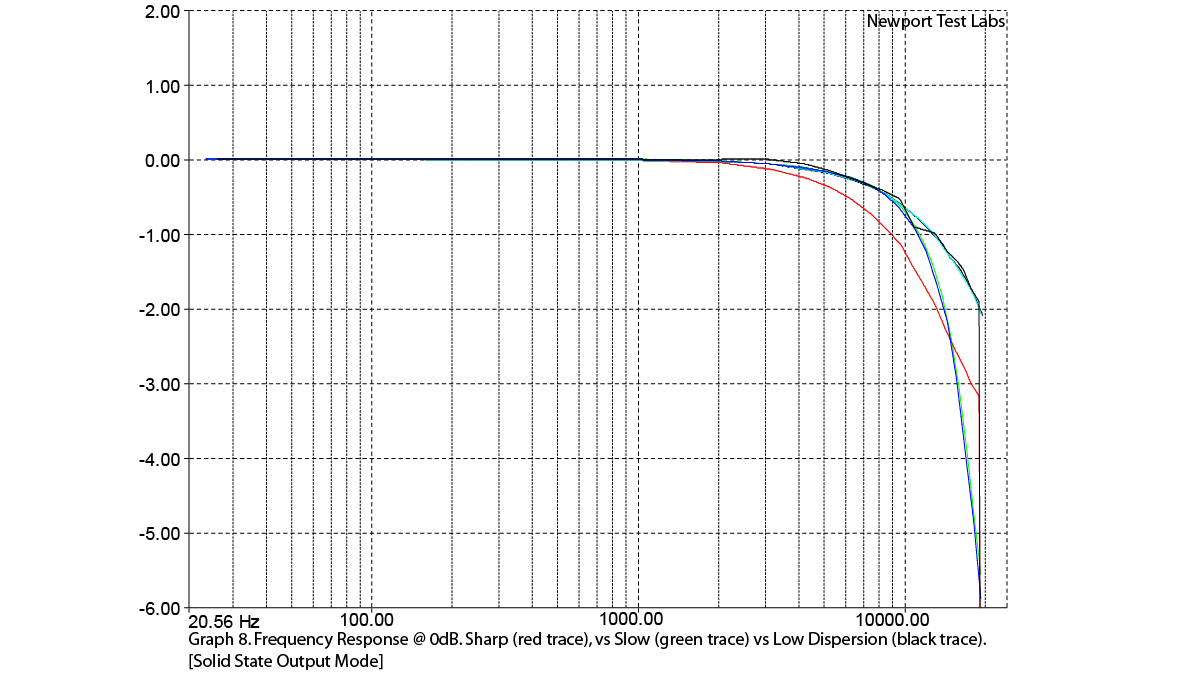
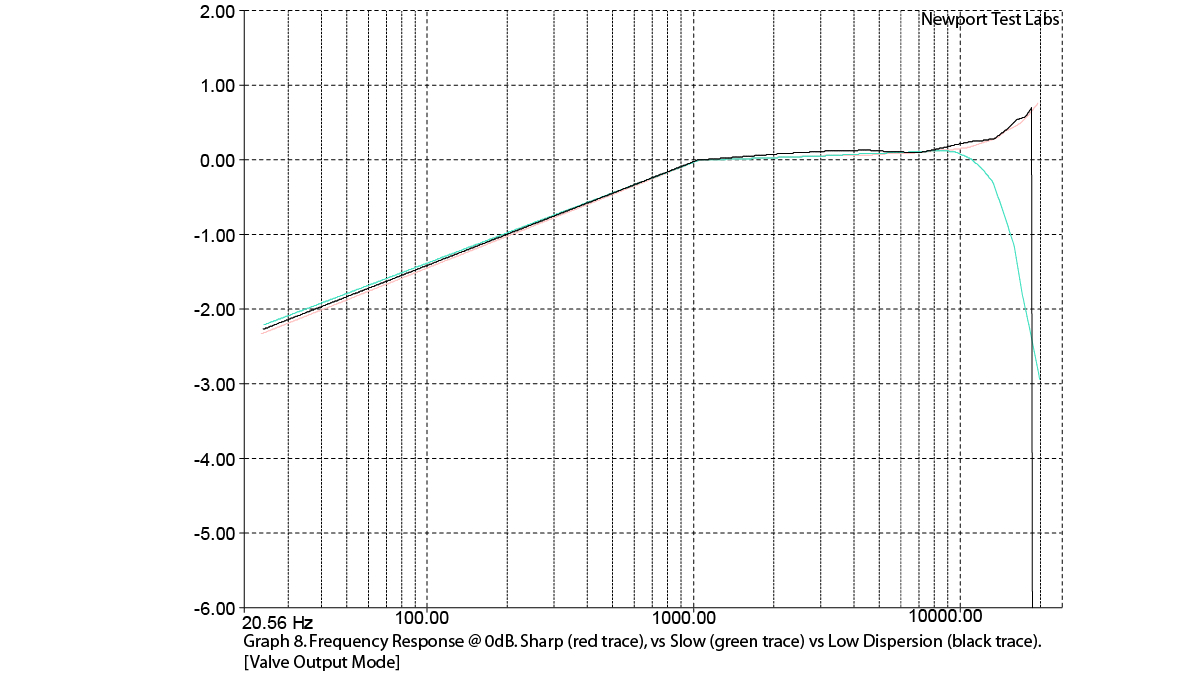
The frequency response of the Metronome AQWO’s solid-state output stage is shown in Graph 8a, for all six different filter options. All except Filter 5 are only around 0.8dB down at 10kHz, after which the slow options are down 2dB down at 20kHz, with the others rolling off to be around 6dB down at this same frequency. The important thing to note here is that below 1kHz, the frequency response is ruler-flat.
The frequency response of the Metronome AQWO’s valve output stage is shown in Graph 8b, and you can see that using the valve output, the frequency response not only rolls off below 1kHz, to be 2.5dB down at 20.56Hz, but also peaks to 0.8dB at 20kHz for two filter settings and rolls off for a third (the other three filter settings are not shown). It would appear that these response variations are the result of the specific transformers used for coupling.
Linearity errors were exceptionally low, as you can see from the tabulated results, with there being no errors at all at two test levels and the largest discrepancy being only 0.06dB. This is outstanding performance.
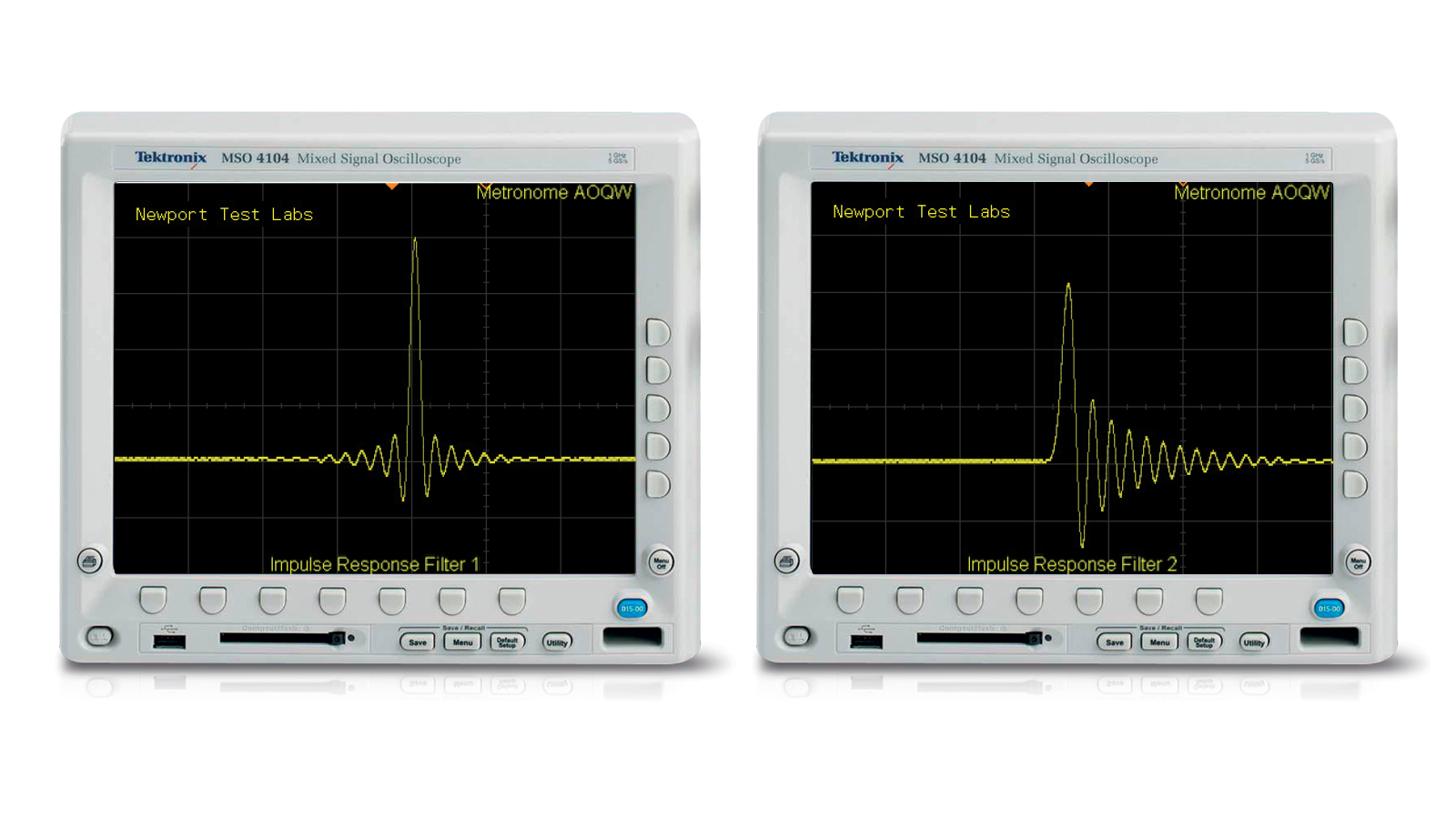
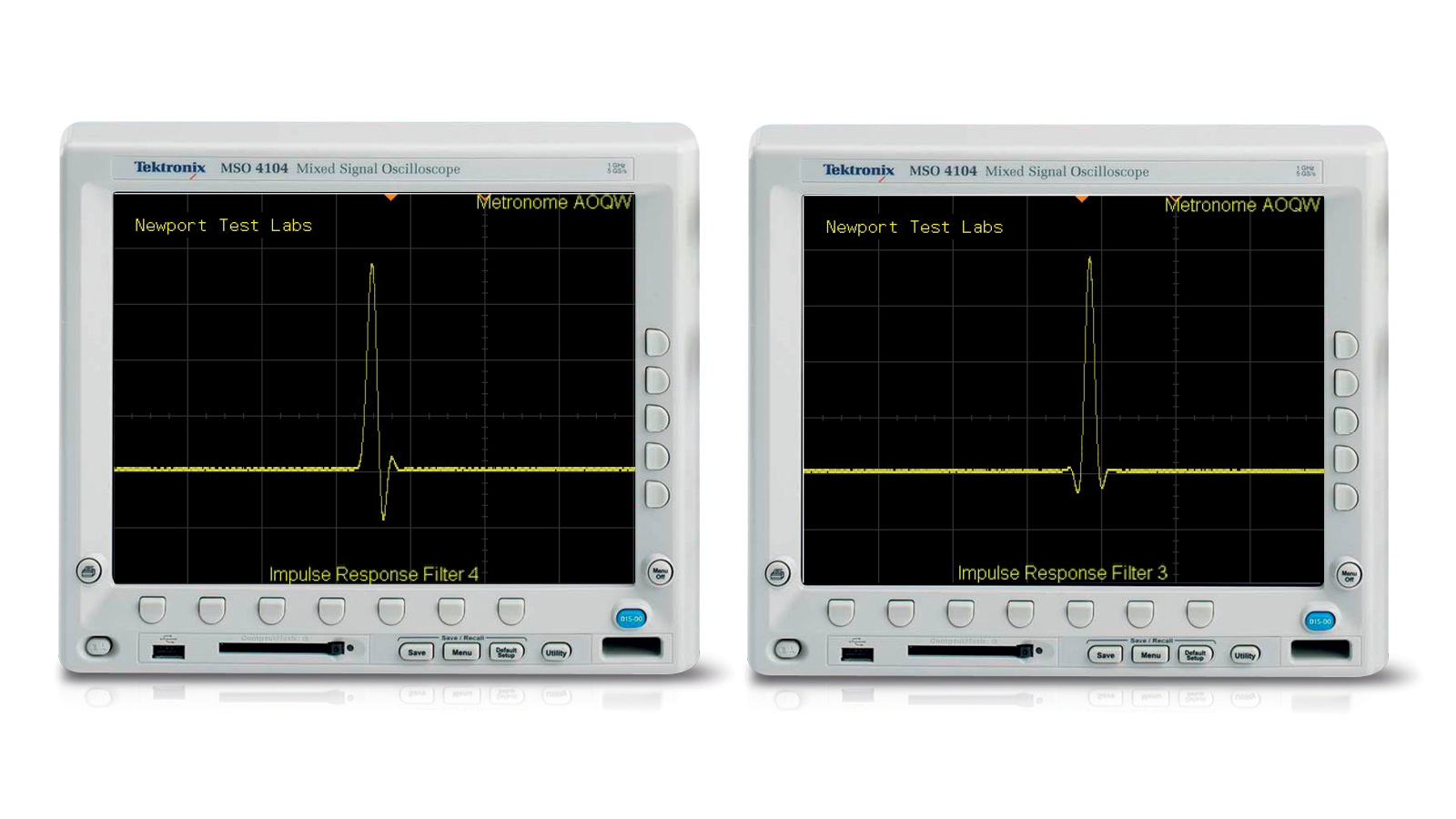
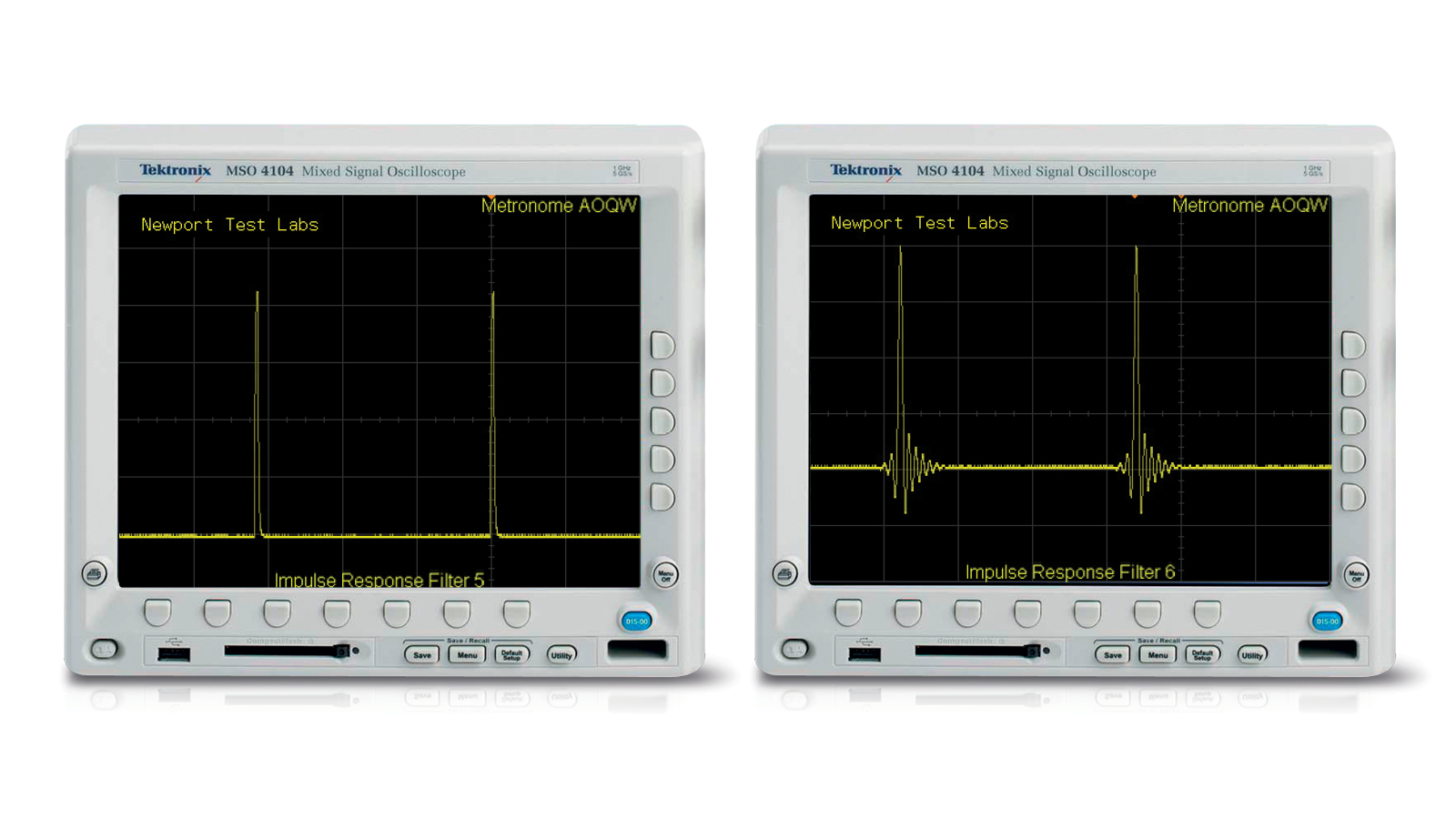
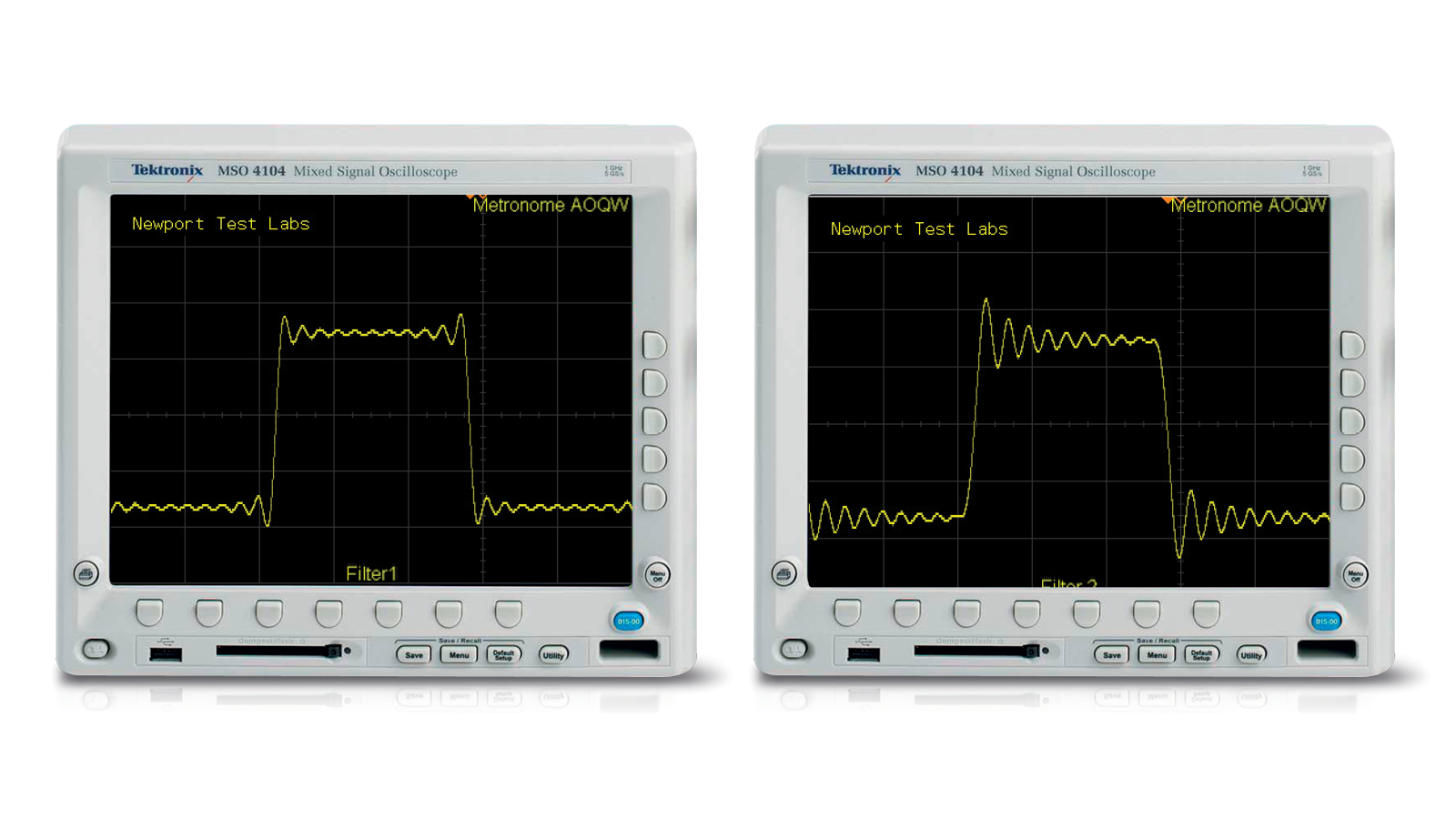
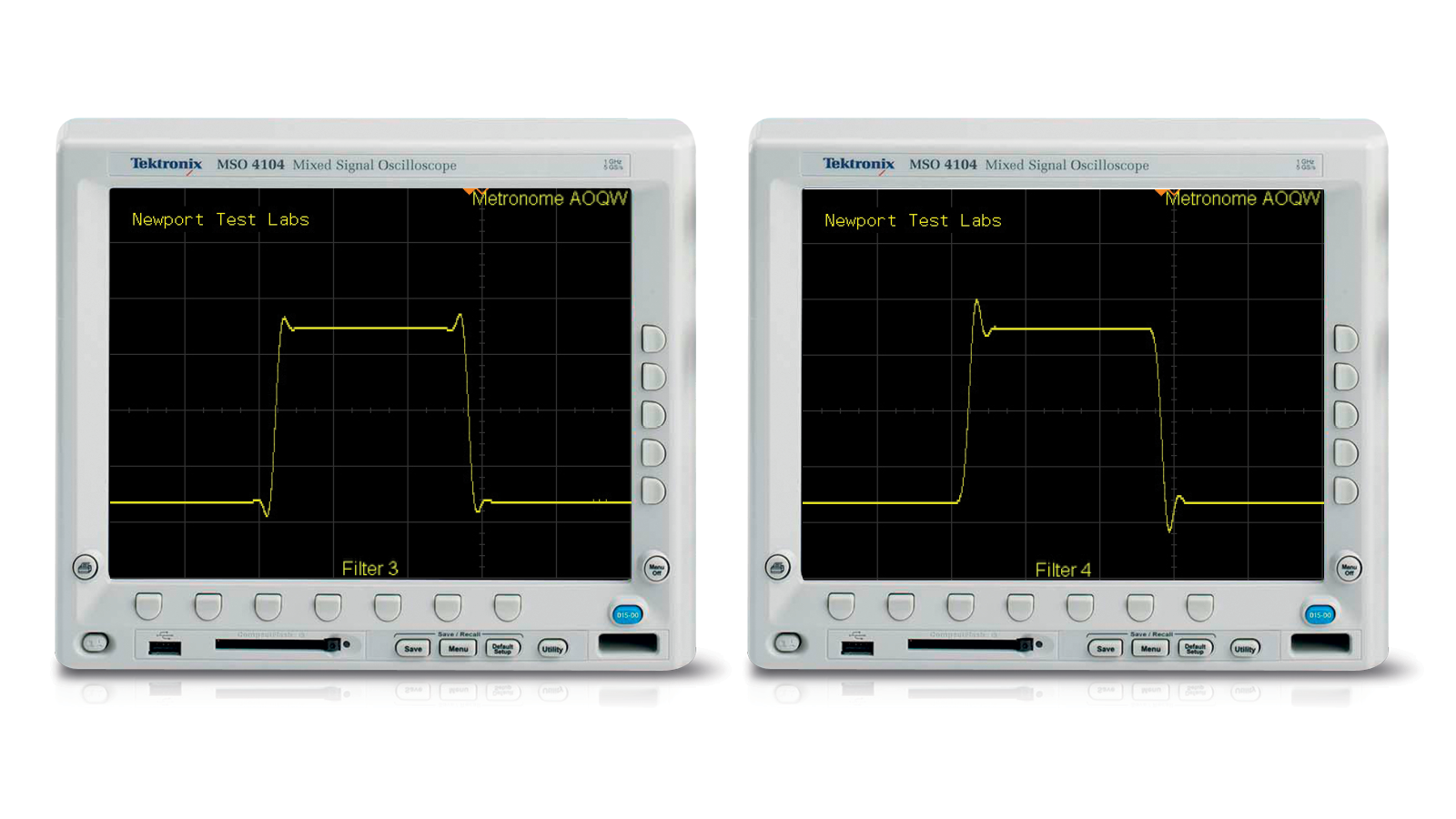
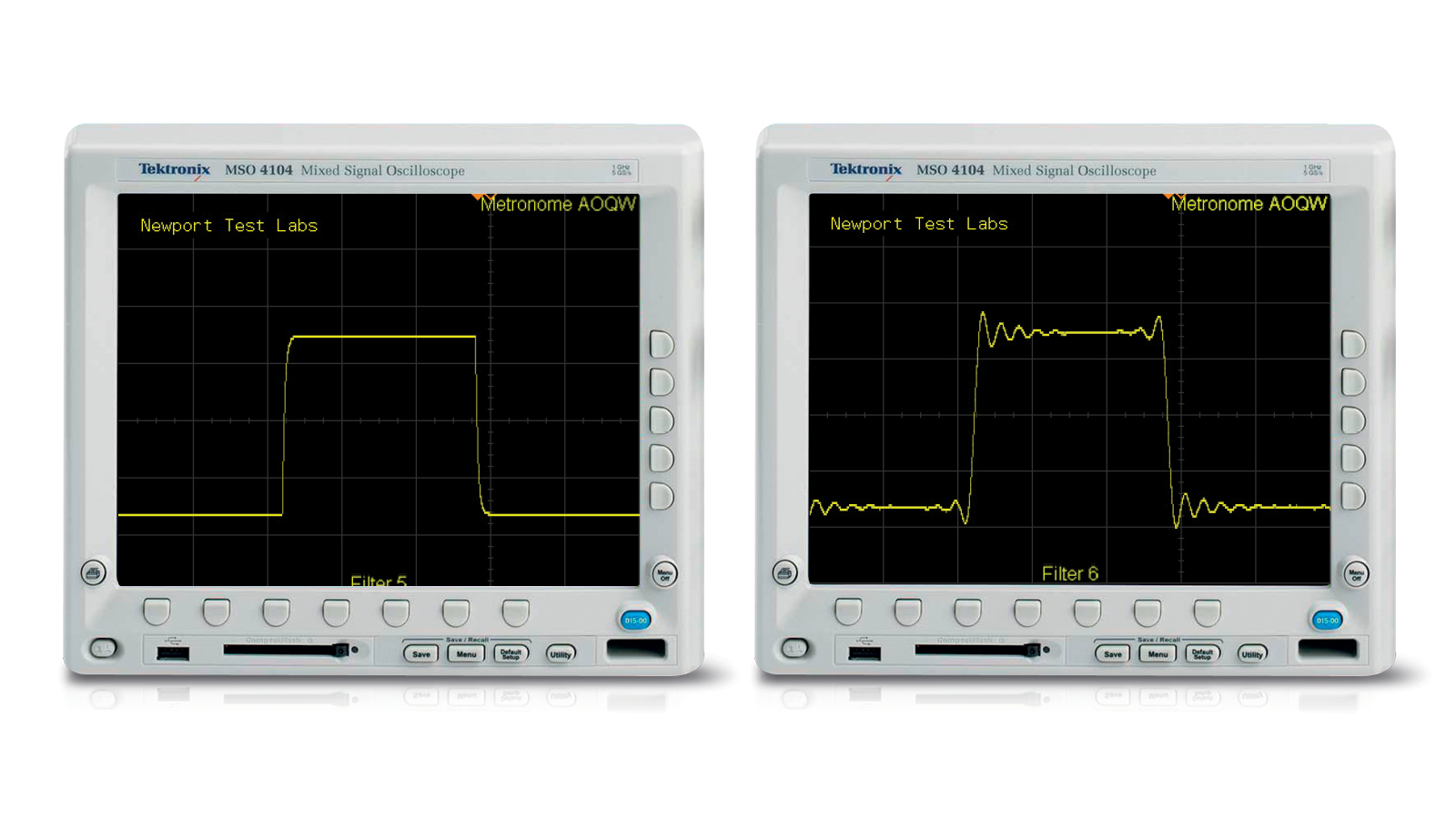
The effect of the various filters on the time domain are shown on the accompanying oscillograms using both square waves and impulses, all acquired using the solid-state output.
You can see that using Filter 5 will result in the most ‘analogue’ sound quality, while Filters 2 and 3 will most closely replicate the sound of most high-end DACs.
Although power consumption in ordinary operating mode is about what we’d expect (around 37-watts), the Metronome AQWO consumes more than 14-watts in its standby mode, which is high enough to make a recommendation that you switch it off whenever you are not using it.
Australian Hi-Fi is one of What Hi-Fi?’s sister titles from Down Under and Australia’s longest-running and most successful hi-fi magazines, having been in continuous publication since 1969. Now edited by What Hi-Fi?'s Becky Roberts, every issue is packed with authoritative reviews of hi-fi equipment ranging from portables to state-of-the-art audiophile systems (and everything in between), information on new product launches, and ‘how-to’ articles to help you get the best quality sound for your home.
Click here for more information about Australian Hi-Fi, including links to buy individual digital editions and details on how best to subscribe.
